Name:
GPA:

Name:
GPA:
Grading every single fall semester team’s season and their MVP



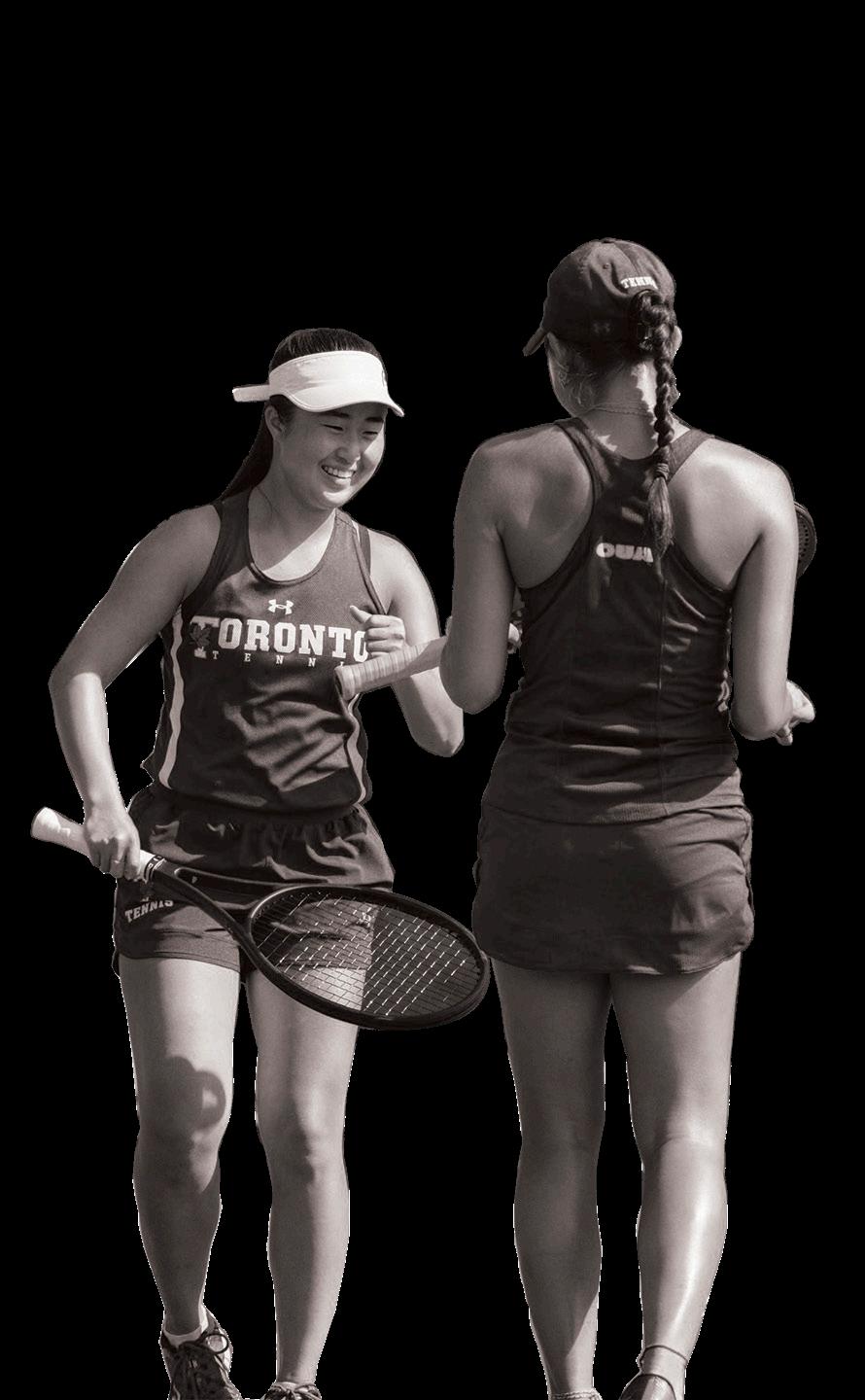




21 Sussex Avenue, Suite 306 Toronto, ON M5S 1J6 (416) 946-7600
Vol. CXLV, No. 10 MASTHEAD
The Varsity acknowledges that our office is built on the traditional territory of several First Nations, including the Huron-Wendat, the Petun First Nations, the Seneca, and most recently, the Mississaugas of the Credit. Journalists have historically harmed Indigenous communities by overlooking their stories, contributing to stereotypes, and telling their stories without their input. Therefore, we make this acknowledgement as a starting point for our responsibility to tell those stories more accurately, critically, and in accordance with the wishes of Indigenous Peoples.
Eleanor Yuneun Park editor@thevarsity.ca
Editor-in-Chief
Kaisa Kasekamp creative@thevarsity.ca
Creative Director
Kyla Cassandra Cortez managingexternal@thevarsity.ca
Managing Editor, External
Ajeetha Vithiyananthan managinginternal@thevarsity.ca
Managing Editor, Internal
Maeve Ellis online@thevarsity.ca
Managing Online Editor
Ozair Anwar Chaudhry copy@thevarsity.ca
Senior Copy Editor
Isabella Reny deputysce@thevarsity.ca
Deputy Senior Copy Editor
Selia Sanchez news@thevarsity.ca
News Editor
James Bullanoff deputynews@thevarsity.ca
Deputy News Editor
Olga Fedossenko assistantnews@thevarsity.ca
Assistant News Editor
Charmaine Yu opinion@thevarsity.ca
Opinion Editor
Rubin Beshi biz@thevarsity.ca
Business & Labour Editor
Sophie Esther Ramsey features@thevarsity.ca
Features Editor
Divine Angubua arts@thevarsity.ca
Arts & Culture Editor
Medha Surajpal science@thevarsity.ca
Science Editor
Jake Takeuchi sports@thevarsity.ca
Sports Editor
Nicolas Albornoz design@thevarsity.ca
Design Editor
Aksaamai Ormonbekova design@thevarsity.ca
Design Editor
Zeynep Poyanli photos@thevarsity.ca
Photo Editor
Vicky Huang illustration@thevarsity.ca
Illustration Editor
Genevieve Sugrue, Milena Pappalardo video@thevarsity.ca
Video Editors
Emily Shen emilyshen@thevarsity.ca
Front End Web Developer
Andrew Hong andrewh@thevarsity.ca
Back End Web Developer
Razia Saleh utm@thevarsity.ca
UTM Bureau Chief
Urooba Shaikh utsc@thevarsity.ca
UTSC Bureau Chief
Matthew Molinaro grad@thevarsity.ca
Graduate Bureau Chief
Vacant publiceditor@thevarsity.ca
Public Editor
Associate Senior Copy Editor
Asmi Khanna, Damola Omole, Sharon Chan
Associate News Editors
Avin De, Shontia Sanders
Associate Opinion Editors
Caitlin Adams, Ameer N. Vidal
Associate Features Editors
Sophia Moniz, Chris Zdravko
Associate A&C Editors
Mashiyat Ahmed, Ridhi Balani
Associate Science Editors
Mariana Dominguez Rodriguez
Social Media Manager
Associate Sports Editor
Victoria Man, Medha Barath
Associate B&L Editors
Loise Yaneza
Associate Design Editors
Jaylin Kim
Associate Illo Editor
Jason Wang, Kate Wan
Associate Photo Editors
Nidhil Vohra, Jennifer Song
Associate Video Editors
Charel Suarez
Associate Web Developer
Copy Editors: Aryan Chablani, Charlie Bendell, Juliet Pieters, Karen Adedeji, Matthew Cancelliere, Michelle Wong, Raina Proulx-Sanyal, Valerie Yao
Designers: Ayana Lewis, Rita Acisobi, Loise Yaneza
Cover Courtesy of Armando
: thevarsity.ca thevarsitynewspaper @TheVarsity thevarsitypublications the.varsity The Varsity
Barry
BUSINESS OFFICE
Ishir Wadhwa business@thevarsity.ca
Business Manager
Rania Sadik raniasadik@thevarsity.ca
Business Associate
Eva Tsai, Muzna Arif advertising@thevarsity.ca
Advertising Executives
“We want to see big changes”: Indigenous community members at U of T reflect on challenges with advocacy Indigenous students, researchers call on U of T to build relationships and provide support
and securing sufficient funding for full-time media staff remains a key challenge.”
Urooba Shaikh UTSC Bureau Chief
At U of T, Indigenous advocacy and engagement have taken on various forms through the support of Indigenous community members, from research and knowledge sharing to creating space for cultural practice.
Indigenous community members at U of T told The Varsity about their advocacy both at U of T and globally; the kinds of spaces they aim to create for the Indigenous community; the challenges associated with their advocacy work; and what needs to be done to address these difficulties.
What advocacy looks like
The Varsity interviewed Giselle Del Valle, a fourthyear student studying psychology at UTSC who is Mohawk from the Six Nations Grand River Nations and the Hoof Clan Lead at U of T’s tri-campus Indigenous Students’ Association (ISA).
In her position, Del Valle is expected to host socials, develop partnerships with student groups, promote the ISA’s cultural initiatives, and manage the group’s social media. They said that uplifting student morale and creating spaces for ceremony and culture is important to the ISA’s work, especially in times of hardship.
“These past two weeks, we’ve lost three community members, and it’s just been kind of hard navigating through grief. [Having] a space [is important so] that [it] is safer for Indigenous peoples to not just feel their grief but also understand that whenever hardship happens like this, we [can] make sure to bring up morale,” they said.
Yojana Miraya Oscco — a PhD student studying political science and a member of the Quechua Indigenous community in Peru — is a co-host and producer of the podcast Kuskalla: Juntos-Together. Available in Quechua, English, and Spanish, the podcast shares stories about the Quechua language and Andean knowledge, culture, and politics. For Miraya Oscco, sharing knowledge and centring Indigenous people’s voices is the basis of advocacy.
“I know I’m going to be writing a dissertation, but people in my community don’t read [academic] articles or books. They don’t even have access… Often universities produce knowledge just within the [academic community], but how can we actually expand that and make it accessible to people? So I think the podcast is very useful, anyone can listen to it,” she said.
Another advocacy initiative is the Ziibiing Lab in UTSG’s Department of Political Science, which conducts research on global Indigenous politics and self-determination, focusing on how research and building partnerships are essential for advocacy.
The lab actively engaged in advocacy to support partners, such as the Hawaiian Environmental Alliance, to petition for the United Nations Committee on the Elimination of Racial Discrimination to address the human rights violations from Canada’s support of the Thirty Meter Telescope (TMT) project on revered land in Mauna Kea, Hawaii.
The TMT is projected to be the largest visible-light telescope on a burial ground of sacred ancestors
and the site of many religious rituals conducted by the Kānaka Maoli, the Indigenous people of Hawaii.
“This initiative highlights Ziibiing’s role in supporting Indigenous sovereignty and amplifying Indigenous voices on an international platform, particularly in defense of rights threatened by largescale projects,” wrote Indira Quintasi Orosco, a PhD student studying education at OISE and a knowledge mobilization specialist at the lab, in an email to The Varsity
Challenges with advocacy, social media
Despite all the advocacy that campus groups have accomplished, there are still many challenges and barriers that these groups face.
While the ISA uses Instagram as a part of its advocacy, Del Valle says much of its reach is through offline connections with community members. However, creating such spaces and making them accessible for students also comes with challenges. They pointed to the low enrolment rates for Indigenous students at U of T as a concern.
“It’s really difficult having and maintaining space for Indigenous students, especially with the excuse from U of T being a low [Indigenous] student presence… That’s the fault of the institution and how they enroll students, as well as a lot of the supports they don’t provide for us,” Del Valle said.
According to U of T’s Student Equity Census of 2023, across all three campuses and all levels of study, only about 0.7 per cent, or 653 students total, identified as Indigenous.
Miraya Oscco says that building solidarity networks and creating long-term impacts can be difficult because of the unique challenges each Indigenous community faces.
“For many organizations who advocate for communities, often the advocacy is not long term; it is sometimes very short term. Sometimes it’s just symbolic but not doing anything in a tangible way to impact these communities,” she criticized.
For the Ziibiing Lab, using media platforms such as their lab website has helped expand their reach. The lab has also supported the production of two podcasts: Kuskalla: Juntos-Together podcast and the REDsurgence podcast. Despite the range these platforms carry, they are expensive to maintain. Orosco wrote that, “managing these platforms effectively requires dedicated resources,
The Ziibiing Lab also feels that Indigenous methodologies and perspectives are not always prioritized in a research and academic context.
“The Ziibiing Lab remains committed to preserving the integrity of Indigenous approaches in our work, but balancing this with academic expectations can be complex,” she added.
What should U of T do?
Miraya Oscco says it’s up to U of T as an institution to develop long-term relationships with existing Indigenous community organizations to support their advocacy efforts for students.
“[Many communities] have their own organizations that are rightly working to [be], for example, more equitable,” she said. “So what we have to do as an institution is support these kinds of [organizations] existing in these communities… I think it’s important to have commitments with a community for [the] long term, not just for a few months, if we want to see big changes.”
The Ziibiing Lab believes that creating dedicated funding and support for Indigenous research and advocacy initiatives at U of T would allow organizations like the Ziibiing Lab to expand their outreach through media platforms and provide more programming.
“Additional institutional support from U of T’s administration in publicly endorsing Indigenousled advocacy would also be instrumental in strengthening our impact within the university community and beyond, as well as in promoting the university’s commitment to Indigenous rights and knowledge,” Orosco wrote.
Del Valle says that U of T needs to consult Indigenous groups to implement the advice of Indigenous community members and make a concerted effort to provide resources for Indigenous students.
“[U of T] refuses, time and time again, to actually listen and implement [the advice] of our elders and community members,” they added.
However, Del Valle says it is the dedicated spaces for Indigenous people at U of T — such as First Nations House — that have allowed them to feel a sense of belonging on campus.
“I would not be able to get through academia if it wasn’t for [the First Nations House],” they explained.
The Varsity did not hear back from the university administration in time for publication.
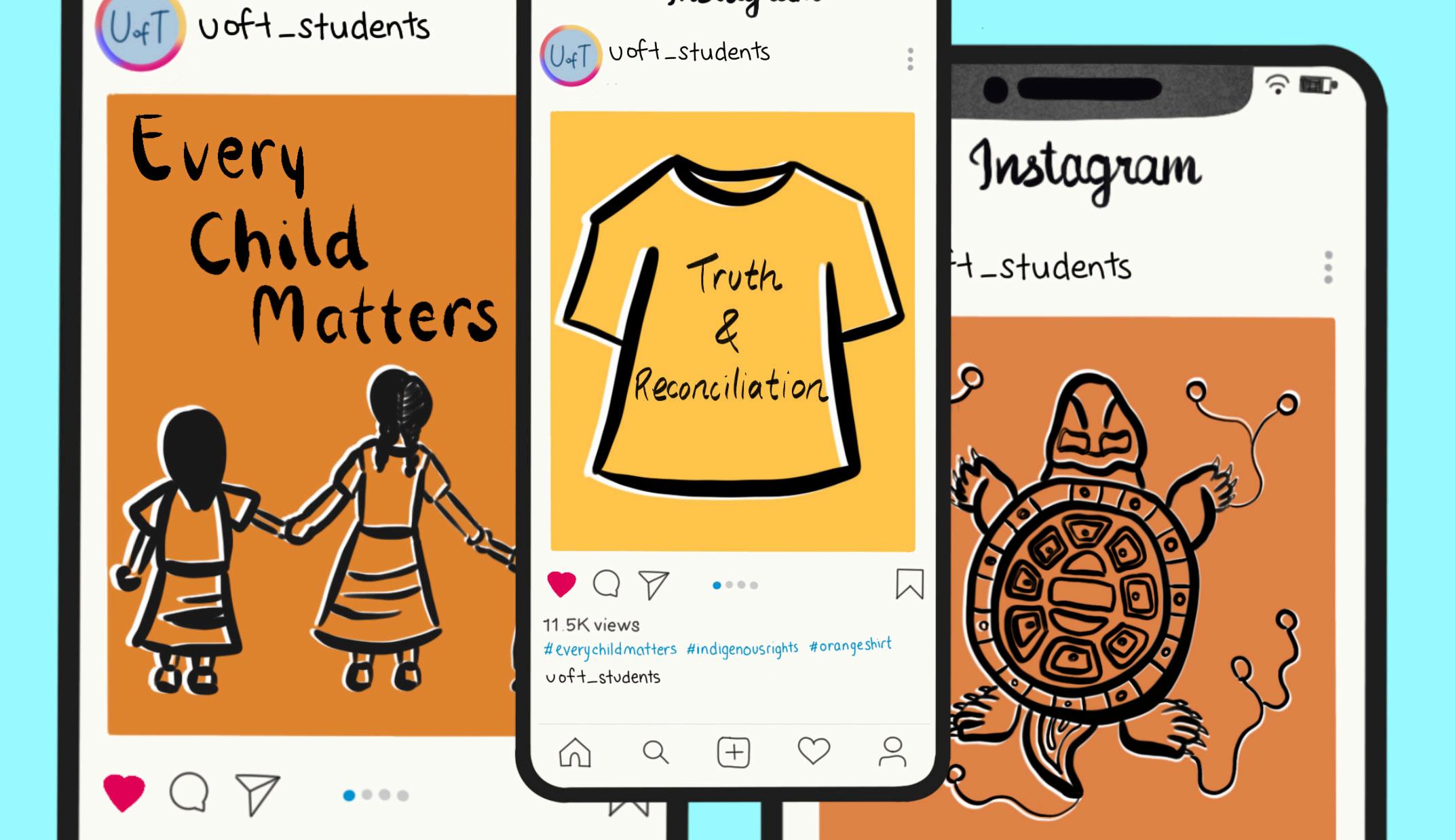
On November 11, U of T held Remembrance Day services across its three campuses. At UTSG, the service commemorated the 100th anniversary of the Soldiers’ Tower.
The Varsity attended each event and spoke with some attendees about the ceremony.
UTSG
The UTSG community observed Remembrance Day with a ceremony at the Soldiers’ Tower to honour the sacrifices of veterans and those who died in service of Canada in World War I and World War II. Students, faculty, staff, alumni, government officials, and local residents gathered to pay tribute to those who served in military conflicts past and present.
Around 10:30 am, the carillon bells rang out from Soldiers’ Tower. The ceremony marked two historic milestones: the centennials of both the Soldiers’ Tower and the Royal Canadian Air Force (RCAF). Chair of the Soldiers’ Tower Committee Lieutenant-Colonel (Lt.-Col.) Peter MacLaurin and Lt.-Col. David Letellier de St-Just delivered speeches to the hundreds in attendance that reflected upon the enduring legacy of those who served.
The ceremony featured a tribute to Canada’s

UTSC
To pay tribute to the Canadian soldiers who served

war efforts through poetry readings, historical vignettes, and a recounting of Soldiers’ Tower dedication to fallen soldiers on June 5, 1924. The Soldiers’ Tower is a memorial to the 628 members of the university who gave their lives while on active service in World War I.
Wreaths were laid at the tower’s three arches by U of T President Meric Gertler, Vice-President and Provost Trevor Young, Governing Council Chair Anna Kennedy, and Canada’s Deputy Prime Minister and Minister of Finance Chrystia Freeland. Other dignitaries and representatives from student groups also participated in honouring the fallen.
At 11:10 am, a gun salute at Queen’s Park resonated across campus followed by a solemn moment of silence and the singing of the Canadian national anthem. The ceremony concluded with a public reception at Hart House’s Great Hall, where attendees reflected on the day’s events.
Attendees were also invited to explore the Tower’s Memorial Room, which remained open until 4:00 pm. The room is open to the public multiple times a week on an irregular schedule.
during World War I and World War II, UTSC also held a ceremony in the Meeting Place.
Linda Johnston, vice-president (VP) and principal of UTSC, made a speech at the event.
“Our need for peace, empathy, understanding, taking care of each other, finding common ground and imagining the pain of others remains more important than ever before,” she said.
Michael Barth, a professional trumpet player and U of T graduate with a Doctor of Musical Arts degree, played “The Last Post” on the bugle during the ceremony.
The UTSC concert band, string orchestra, and concert choir performed pieces to honour Canadian soldiers as well.
Jules Pastoor is a second-year UTSC student studying French, music, and psychology. For the ceremony, he played the trumpet with the UTSC concert band and spoke in an interview with The Varsity about the significance of Remembrance Day.
“I think it’s really about honouring and respecting all the trials that the soldiers went through and just people who had to go through war itself,” he explained. “It’s a time to reflect and remember what they’ve done for us and what their lives and
impact mean to all of us.”
Pastoor said that Canadian soldiers’ sacrifices helped lead the country to where it is now, saying, “We look back and see many of the actions soldiers had to do to keep the peace in our country and make it the way it is today.”
Ivan Cheung, a fourth-year UTSC student in music and French, who plays clarinet in the UTSC concert band, said that in the modern day, it is more challenging to take the time to reflect on past events and think about their effects today.
“It’s pretty difficult to have time to reflect on these things, just to have a day to remember that this is important,” he said in an interview with The Varsity.
Cheung noted that it can be easy for Canadian university students to overlook the immeasurable acts of service that Canadian soldiers and their support networks performed to increase national safety and freedom for generations to come.
“As a U of T student, I have certain freedoms that a lot of us take for granted because it’s just innate,” he said. “You feel it is part of Canadian culture, but there was a lot of bloodshed and sacrifice that went into something like this.”
UTM’s service began at 10:45 am, with UTM VP and Principal Alexandra Gillespie starting with a land acknowledgement. The Canadian national
anthem was then played.
In her opening remarks, Gillespie reflected on what Remembrance Day means to her. “Athenians remember the sacrifice and loss of war. They held generations of soldiers, veterans and families in their memories and they did it together,” she said. “That’s part of what Remembrance Day means for me.”
“We remember veterans of Canadian wars and acknowledge the gravity of their service together,” she added. “At UTM, we do it in a community that connects students, faculty, librarians, staff and alumni from 130 countries around the world.”
“From Ukraine and Palestine, Sudan and Israel, Iran and Myanmar [to] many others, [war] is both a memory and a real experience of life today. [With] our responsibility to honour the past… also [comes] a need for care in the present,” Gillespie noted.
After her speech, Richard Waters, a member of the United Steelworkers Local 1998 — a union that represents U of T’s various administrative and technical staff — and VP Equity at the University of Toronto Mississauga Students’ Union Philip Anyang placed ceremonial wreaths at the foot of the flagpole near the William G. Davis Building. At 11:00 am, attendees observed two minutes of silence.
With files from Zoya Siddiqui.
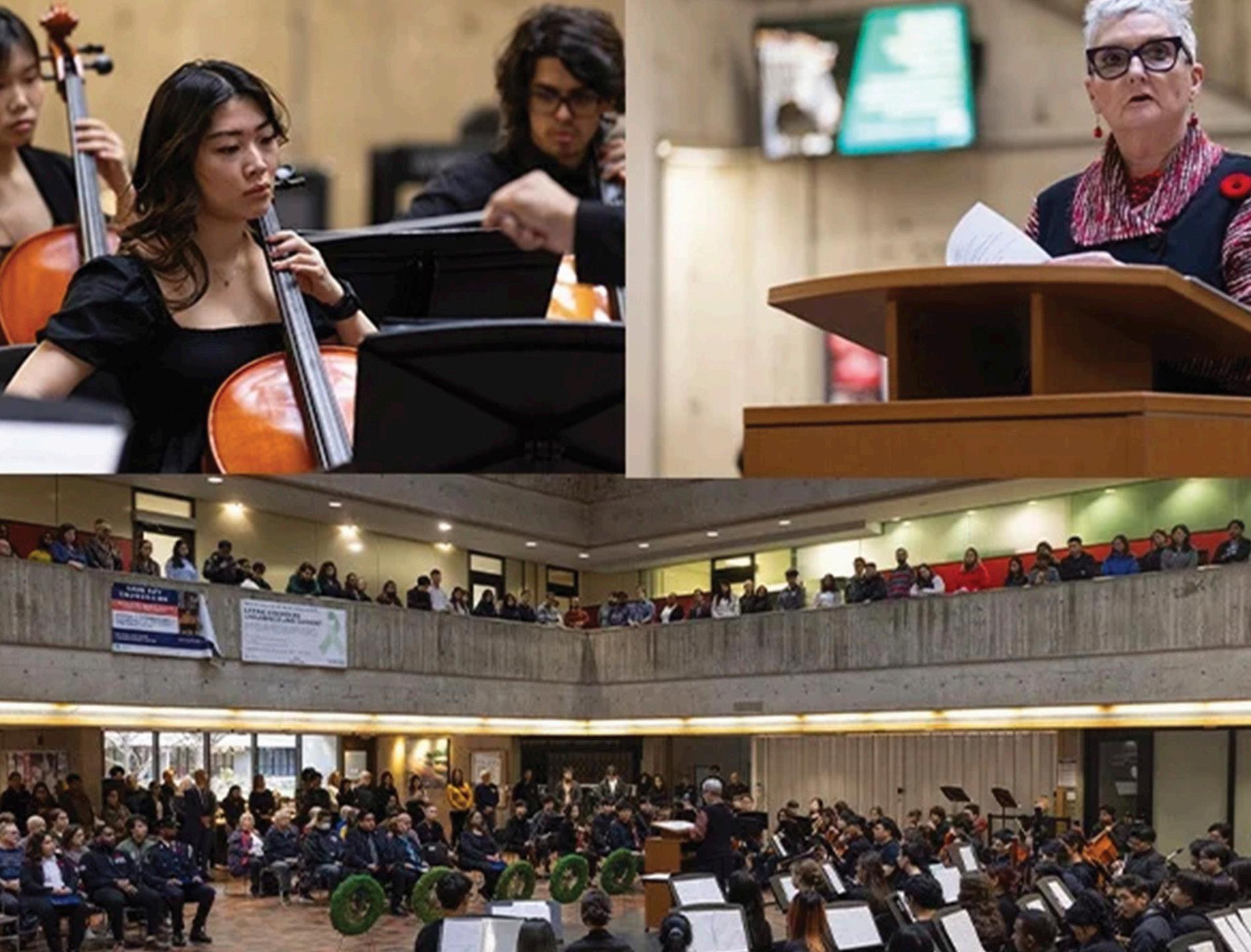
express concern over the admin’s actions, the “Palestine exception”
Olga Fedossenko Assistant News Editor
Over 43,000 Palestinians have been killed by the Israeli military since the start of Israel’s ongoing attacks in Gaza started on October 7, 2023, following Hamas’ attack on Israel.
Since then, some faculty members have been called into their respective deans’ offices for posts in support of Palestine. The Varsity spoke to three U of T professors to find out why some faculty are being called in.
Faculty’s reaction to call-ins
A U of T professor — who requested to speak anonymously due to fear of retaliation — told The Varsity that they had been called in by a vicedean, for retweeting an Instagram post by student coalition Tkarón:to Students in Solidarity with Palestine.
“Naturally, it was an Instagram post that I retweeted and I just added some words to that post to say that the cracks are starting to reveal themselves,” said the professor. “And by that, I meant that there were many connections that the institution at the University of Toronto has with Israeli institutions, and [there’s] also work that is conducted by U of T faculty and students on illegally occupied land.”
The retweeted post spotlighted U of T’s Archaeology Center’s projects in Israel. The center’s website used to have an “Archaeology of Israel” page that was later removed. The page talked about “[building] connections between archaeologists at the University of Toronto and those across Israel” and highlighted field schools and residence opportunities for students and faculty in Israel.
“The University of Toronto is in a unique position to make a significant contribution to the archaeology of Israel—and enshrine a legacy for enduring activity and partnership. Several leading
faculty members have a long record of research in both Israel and the Arab world,” said the center’s “Archaeology of Israel” page in 2017.
Although the page was removed, U of T still has the Archaeology in Israel Trust to which people can make donations “to support activities in and related to archaeology in Israel.”
The anonymous professor claimed that the vicedean told them that their post made an individual feel unsafe and that person had raised a complaint to Heather Boon, vice-provost faculty and academic life at UTSG. The administration never disclosed the person who made the complaint to the professor, but they later discovered that the individual was outside their department.
The professor noted that the post wasn’t directed at a specific individual or group. “[It] was about an institutional affiliation between a program here at U of T and an Israeli institution,” they said.
“There was nothing individualized, but that person made it about themselves.”
Even though the professor said the vicedean was “sympathetic” toward him, they were initially “very angry” about how the administration contacted him. “The email from my vice-dean wasn’t, ‘Can we talk about this at some point in the future?’ It was, ‘Meet me today. I need to speak to you now,’” they explained. “It was very much like being called into the principal’s office if you’ve done something wrong… It was intimidating.”
And yet, they said the incident hadn’t changed their behaviour online. “My anger, my frustration, even my fear, is nothing compared to what Israel is doing to Palestine, to Palestinians, to Lebanon, to Lebanese, ” they said.
The Varsity reached out to the university to understand why the administration called in its faculty. A U of T spokesperson stated, “We want to be as forthright as possible, but for reasons of confidentiality and people’s privacy, we are not sharing more details.”

The anonymous professor mentioned they weren’t the only faculty member contacted by the university administration because of their social media posts. “People continued to be called in for even retweets,” they said.
Beverly Bain — an assistant professor in the history department at UTM — added that overall, many of U of T’s faculty have been doxxed and threatened for speaking out in support of Palestine.
In an interview with The Varsity, she mentioned faculty members receiving a letter from a dean right after October 7, 2023, “stating that we need to be really careful about how we speak, and be careful that we are not using inflammatory language, and that our language is not anti-semitic, and all sorts of accusations.”
The anonymous professor expressed their concern about threats to academic freedom regarding Israel’s war on Gaza. “[This] is why people call it the Palestine exception, because only when we start addressing the history and the politics of Zionism and its connections to a country called Israel, is when we get called in,” they said.
“I’ve seen people say I shouldn’t talk about this, I shouldn’t write about this. I shouldn’t send an email in support of Palestine, or I shouldn’t send an email addressing the genocide,” they added. “Using the word genocide is something that people refrain from in conversations within the department, especially formal conversations.”
Bain added that those “most impacted by the [university’s actions] are Black people, Brown people, and Indigenous people on campus.” Even though she has not been called into the deans’ office, Bain said she knows that “other faculty members who are particularly racialized and Black… have been called into their deans’ offices in different departments and have been told to be silent.”
Ruth Marshall — an associate professor in the department for the study of religion at UTSG and
Decision follows U of T, federated colleges’ commitment to divest from fossil fuels
Sharon Chan Associate News Editor
The School of the Environment at U of T recently announced that it will financially disassociate from fossil fuel funding and partnerships. The decision makes the School of the Environment the only academic institution in North America with a commitment to fossil fuel dissociation.
Climate Justice UofT (CJ UofT) — a student climate activist group on campus — believes that while the announcement marks a “huge victory for the student climate movement, the fight is far from over.”
Fossil free research
In its announcement, the School of the Environment said it adopted three new principles to guide the department’s decision-making on funding and future partnerships. The School of the Environment will no longer be accepting donations from fossil fuel companies for buildings and infrastructure, student scholarships, seminar series, and other activities.
“The School of the Environment’s commitment to dissociate from the fossil fuel industry was made in consultation with faculty members within the School of the Environment, as well as collaboration and input from both undergraduate and graduate students,” the announcement read.
The School of the Environment will also no longer enter into sponsorship agreements with fossil fuel companies for events and initiatives at the school,
including recruitment events. The department will seek to increase its transparency with funding, donations, and partnerships while respecting the academic freedom of faculty, colleagues, and students in their research and teaching.
“The School acknowledges the limitations of these principles, and we will work with the University of Toronto leadership to explore broader, university-wide policies on fossil-free research.”
In a statement to The Varsity, a U of T spokesperson noted that “individual researchers have academic freedom to partner with community groups and not-for-profits, industry, business, government and others to advance their research.”
They added that “there is no policy at U of T — nor any federal law or directive — that prohibits researchers from taking funding from fossil fuel companies. There are a number of well-established guidelines and policies that guard against undue influence on research without limiting or censoring research funding opportunities for scholars.”
CJ UofT response
In an October press release from CJ UofT, the organization stated that the School of Environment’s decision to financially disassociate from fossil fuels marks “a major win for the student climate movement.”
According to CJ UofT, in order for U of T to be “a true climate leader” the university must fully cut ties with the fossil fuel industry and not accept fossil fuel financing for climate and energy-related research.
“The commitments are limited to the School of
the Environment and do not pertain to the University of Toronto at large, which continues to accept funding from and engage in research partnerships with fossil fuel companies,” CJ UofT stated.
“We will fight until all universities stop accepting fossil fuel funding and enabling the climate crisis,” said recent U of T graduate and CJ U of T cofounder Erin Mackey in the release.
In January, CJ UofT published its “Bound to Big Oil” report. The report highlighted universities’ responsibilities in phasing out their reliance on fossil fuels, as they’re responsible for academic agenda setting, researching policy solutions, and informing public opinion about fossil fuels.
The report’s research is partially funded by the School of the Environment and is cited in CJ UofT’s press release as a contributing factor to the department’s decision.
Between 2008 and 2018, U of T accepted over $64 million in donations from the fossil fuel industry. According to CJ UofT’s report, through donations to the university, fossil fuel companies gain influence over research agendas — legitimizing false solutions and counternarratives to climate science.
“In the context of university decision-making, fossil fuel companies exert leverage beyond monetary donations by having a presence in the bodies of university governance. In such cases, people who hold key decision-making and oversight positions at academic institutions are also active decision-makers in the fossil fuel industry,” states the report.
In a statement to The Varsity, a U of T
a member of the University of Toronto Faculty Association (UTFA) — said she felt “outraged” that deans and vice-deans called her colleagues in for their social media posts.
On October 4, Marshall posted about it on X, writing that, “Deans have ZERO business calling you in for the political content of your social media. If you must go, take your union rep/lawyer.”
Even though Marshall has not been called in, she said that, “If you’re called into a meeting with the Dean, you have a right to know in advance what the meeting is about, the nature of the complaint and the complainant, and if there [are] any disciplinary risks attendant on it.”
According to Marshall, this procedure is outlined in the Memorandum of Agreement between UTFA and the Administration. Article 7 of the document states that “[complaints] must be presented… after the grounds for the grievance were known or ought reasonably to have been known by the faculty member or librarian.”
Finally, Marshall said that the tone of a recent call-in email from a dean that a colleague shared with her is “accusatory and hostile, and appears designed to create the impression of an offence where none exists.”
The Varsity reached out to the university to inquire if U of T has a specific policy regarding complaints against faculty members. The university spokesperson said that the university has “processes in place to address complaints from members of our community about other members of our community, and the university sends an annual communication, which is unrelated to specific world events or behaviours, to remind faculty members, librarians and staff of their rights and responsibilities.”
The spokesperson added that “The university has a high threshold for speech and expression for its faculty members that enables the fullest range of debate and dissent on our campuses, within the limits of university policies and applicable laws.”
spokesperson referred to the Provostial Guidelines on Donations as the policy that “protects the University’s integrity, autonomy and academic freedom” when it comes to receiving gifts or donations, including from corporations.
“The University only solicits and accepts gifts for academic priorities that are approved by the Provost at the recommendation of Principals and Deans, in accordance with established procedures for academic planning and academic initiatives,” they added. “The terms and conditions governing the use of donations are matters of public record, except for information which is personal or proprietary.”
Through U of T’s Blue Door Research Directory, CJ UofT found in their report that at least four current U of T professors in the Faculty of Applied Science and Engineering have previously entered into or are actively engaged in sponsored research agreements with fossil fuel companies.
Role of universities in phasing out fossil fuels In 2019, U of T announced a Low-Carbon Action Plan, aiming to reduce its greenhouse gas emissions by 37 per cent by 2030. In 2021, the university committed to divesting its four billion dollar endowment fund from fossil fuels by 2030 at the latest.
In an interview with The Varsity, Matthew Hoffmann, a professor in the Department of Political Science at UTSC and co-director of the Environmental Governance Lab, said that he believes that the university “[has] to go faster” in its divestment plan.
“The School of the Environment is the only educational institution that I know of that has made this kind of commitment to transparency,” said Hoffmann. “It’s a challenge to the rest of the university to take this seriously and to really consider following in the School of the Environment’s footsteps.”
James Bullanoff Deputy News Editor
On November 7, U of T’s Governing Council held its first meeting of the 2024–2025 academic year. During the meeting, U of T President Meric Gertler delivered his report, Ombudsperson Bruce Kidd discussed concerns about personal safety at the university, and council members debated a motion to condemn antisemitism at the student encampment.
President report
In his president’s report, Gertler commented on the Canadian government’s new regulations on international student study permits, and said that “the changes will have an undoubtedly negative impact on many colleges.”
Gertler noted that while other postsecondary institutions experienced a 40 to 50 per cent reduction in international students, U of T is facing only a five to six per cent decrease. The Varsity was unable to independently verify the reduction in international students. He attributed this to “a lot of hard work by many registrars and deans and people in the Provost Office to minimize the negative impact of these cuts.”
Gertler also provided an update on the university’s commitment to commissioning a retrospective analysis of the university’s experience with the encampment in May and June, noting that a third-party expert will be invited to assist with the review.
“This is something that we normally do following major incidents, and we view this as an essential opportunity to learn from experience and to inform our responses to future challenges of a similar nature,” he said.
The university has consulted with three external organizations that have “specialized expertise” in crisis and emergency management and is finalizing the selection of a consulting firm for the review. Most of the work is expected to take place this semester, with completion anticipated by late 2024 or early 2025.
Cameron Miranda-Radbord, a fourth-year student studying sexual diversity studies, Canadian studies, and critical equity and solidarity studies, is an undergraduate member of the council. He asked whether a similar external review of the sexual violence policy will be conducted in the future.
Ontario government legislation requires all postsecondary institutions to review their sexual violence policies every three years. U of T began its most recent review in October 2021.
In response, Sandy Welsh, vice-provost, students, said the university is “working [to incorporate] appropriate external reviewers that would allow us to move forward with our policies in the ways that we know our students are wanting us to do.”
Ombudsperson report
The Office of the Ombudsperson is an independent and impartial body that provides advice and assistance to all U of T members with unresolved concerns about their treatment at the university.
Ombudsperson Kidd presented his report for the 2023–2024 academic year, noting that the Office of the Ombudsperson received 320 complaints, slightly lower than the 350 complaints in 2022–2023.
This year, the office received more complaints from undergraduate students, administrative staff, and postdoctoral fellows, but fewer complaints
Olga Fedossenko Assistant News Editor
On October 22, the University of Toronto Faculty Association (UTFA) issued a letter to U of T’s Provost and Vice-President Trevor Young criticizing the User Guide to U of T Policies on Protest and Use of Campus Spaces created in August.
In the letter, the UTFA executive committee had “strong concerns about the Administration’s violations of the Memorandum of Agreement.” The UTFA claims that the protest policy “violates the freedom of association and collective bargaining rights of UTFA and other campus labour unions.”
What is U of T’s protest user guide?
The protest user guide is a guideline for students and other U of T community members regarding protesting on campus. The guide was released almost two months after the 63-day pro-Palestine encampment at King’s College Circle concluded. In late October, U of T updated the guide to include a preamble and case studies that show “examples of student activities which may violate policy.”
Based on pre-existing policies, the user guide states that while the university is “guided by a commitment to the right of its community members to express and discuss ideas freely,” “there are limits” to that expression.
The guide states that university policies prohibit anyone from occupying or entering U of
T property without permission; setting up tents, encampments, fences, barriers, or other structures on campus; making noise that hinders the speech of guests or that interferes with activities at U of T; putting up signs, posters, or flyers — including those that use chalk, markers, paint, and projections — outside of designated areas; or taking any other action that would be a security threat to U of T campus and community.
The guide states that anyone who participates in “these prohibited activities” may face “consequences under law and U of T policies, including arrest, suspension, trespass from property, and expulsion.”
The guide cites the Ontario Superior Court order from July 2 — which granted U of T permission to remove the encampment and stated that any police authority could “arrest and remove any person who has knowledge of this Order” for “interfering with… access to University property.”
UTFA’s response letter
UTFA’s letter argues that the new protest user guide “unfairly limits the rights of campus unions to engage in constitutionally protected job actions.”
UTFA’s executive committee called on the university “to fully rescind” the guide and “to announce that it has done so as soon as possible and no later than November 1, 2024.” As of writing, U of T has not revoked the guide.
In an email to The Varsity, UTFA’s President and an Associate Professor in OISE’s Department of
from teaching staff and graduate students, marking a decline from previous years.
“The types of complaints we received were similar to those of past years, with one concerning addition,” the report read. “A spike in concerns about personal safety and discrimination following the October 7 Hamas attack on Israel, the Israeli response, the resulting war, and the ensuing protests, including the encampment at King’s College Circle.”
Lieutenant Governor in Council Member David Jacobs mentioned he was “a little surprised to hear that there was a decrease in the number of complaints.” He found that out of the 500 complaints filed with Hillel Ontario across their nine campuses, 75 were from U of T.
Jacobs noted that “there is a… crack that the students fall through,” which he suggested that the Office of the Ombudsperson recognize. He described the office’s complaint process as “very intimidating” for students.
If students or faculty have a complaint, they can fill out the Request for Assistance Form. After the form is completed, an Ombuds Officer will be in contact with the complainant within two business days.
In response, Trevor Young, vice-president & provost, emphasized the university’s commitment to providing a more detailed report on specific incidents.
“We understand that this is a shortcoming, that the data is not being presented succinctly, and we do appreciate if students or others are not feeling that they’re getting the service they require, or clarity is lacking, we will do better in that regard,” said Young.
Kidd made no new recommendations to the university in the report, but he requested that the administration provide an update on the status of the recommendations from the two previous annual reports on communication, academic integrity, and culture of civility.
During the meeting, Lieutenant Governor in Council Member Robert Cooper raised a correction to the approval of the minutes from the June 27 Governing Council meeting.
Cooper described the last meeting as a “public embarrassment,” referencing the student
Social Justice, Terezia Zorić, wrote, “In publishing the User Guide the [a]dministration has gone well beyond its legal authority to exercise restraint.” She added that the guide “puts express prohibitions on the how, when, where, and manner of protest, backed up by potential legal sanctions extending to arrest and trespass.”
“This could, for example, limit our members’ freedom of association as a labour organization or discourage individual faculty members and librarians from engaging in legitimate forms of scholarly and political debate that are protected by our Memorandum of Agreement,” wrote Zorić.
A Memorandum of Agreement is a document written between two parties to work together on an agreed-upon project or meet an agreed-upon objective.
Finally, the UTFA letter mentions the recent “concerning” remarks by U of T President Meric Gertler during the September Conference on Historical and Contemporary Antisemitism, where Gertler highlighted the user guide as one of the university’s efforts to address antisemitism.
The letter states, “It is deeply worrying to hear a senior [a]dministrator emphasize the need for punitive measures… for ‘hurtful or offensive’ speech — actions that fall well short of legal definitions of hate speech or discrimination.”
protestors rallying outside Simcoe Hall during discussions on the encampment.
“We were here for two hours and subjected to a mob that intentionally interfered with the operations of this Council,” said Cooper. “Encampments and intimidation are not a reasonable exercise of free speech.”
Cooper then referenced a motion from the previous meeting, which stated: “that the Council condemn the antisemitism exploding from the encampment and on display at convocation.”
The judge presiding over the university’s injunction case stated in his ruling in July that there is no evidence suggesting any named protesters or encampment members were involved in antisemitism.
At the previous meeting, Governing Council chair Anna Kennedy referenced By-Law Number 2, which requires the Executive Committee to first consider motions before they go to the council. Since this wasn’t done, the motion was ruled out of order.
Cooper claimed the ruling violated their “governing bylaw,” citing Section 53, which states: “No matter not on the agenda may be introduced at a regular meeting unless the introduction thereof be agreed to by two-thirds of the members present and voting.”
He requested a vote after moving to add the following motion to the agenda: “The Governing Council of the University of Toronto condemns the acts of antisemitism that occurred at the encampment, as well as ongoing antisemitism on its campuses. We advise the administration to implement strategies to effectively protect students, faculty, and staff from this form of discrimination.”
Kennedy explained that motions fall under Section 54, which requires them to be sent to the Executive Committee to determine whether they should be added to the agenda.
Cooper wished to challenge Kennedy’s ruling, but other members expressed discomfort voting on the motion without additional background information. The chair then requested approval of the minutes.
After further debate, members voted to challenge the chair’s ruling. Only four members supported the challenge, so the motion to overturn the chair’s ruling failed. The item will be brought to a future meeting.
The president had noted in his remarks that, “where the action or speech in question is hurtful or offensive but not unequivocally antisemitic, corrective intervention may still be called for, to help community members appreciate how their behaviour has negatively impacted others around them.”
In their letter, the UTFA argued that Gertler’s “expansive and vague interpretation of what could trigger disciplinary action risks fostering a climate of fear and censorship.”
The university’s response
When asked about the UTFA’s concerns, a U of T spokesperson wrote in an email to The Varsity to refer to the preamble of the guide, which states, “The [u]niversity has received a number of questions regarding this User Guide including in relation to its scope and application.”
“This [g]uide was prepared as an [educational] resource primarily for students, though it may be helpful for members of our community to be reminded of existing policy,” stated the preamble. “It may be updated in the future to reflect changes to law and/or policy. The guide does not establish a new policy. Any corrective action will be taken in accordance with the underlying policies and/or law.”

Toronto is planning big to accommodate Swift’s upcoming Eras Tour. Is it worth it?
November 19, 2024
thevarsity.ca/category/business biz@thevarsity.ca

hordes of ‘Swifties’ are bringing in the money, is it worth the accommodation efforts?

the Rogers Centre, a venue with nearly 50,000 seats. In total, this means she’ll be bringing nearly 300,000 people to the venue to watch her perform.
millions of dollars in direct spending and support local businesses and jobs.”
From November 14–23, Taylor Swift’s Eras Tour will be showing in Toronto at the Rogers Centre. The city will accommodate this tour for six nights by optimizing transit, enhancing security, and even renaming streets after her.
The concerts are expected to bring the city $282 million in revenue. However, with this revenue, the concerts are also expected to introduce new noise, traffic, and surge pricing into the lives of Torontonians. Although the
Are we “...Ready For It?”
From its inception, Swift’s Eras Tour has been huge. Being Swift’s first tour since the COVID-19 pandemic, she has released four albums and two re-releases of older albums along with a slew of bonus tracks. She’ll be performing songs from her latest album The Tortured Poets Department all the way back to her 2008 hit single “Fearless.” The setlist is expected to be nearly three hours lonSwift will be performing six sold-out shows at
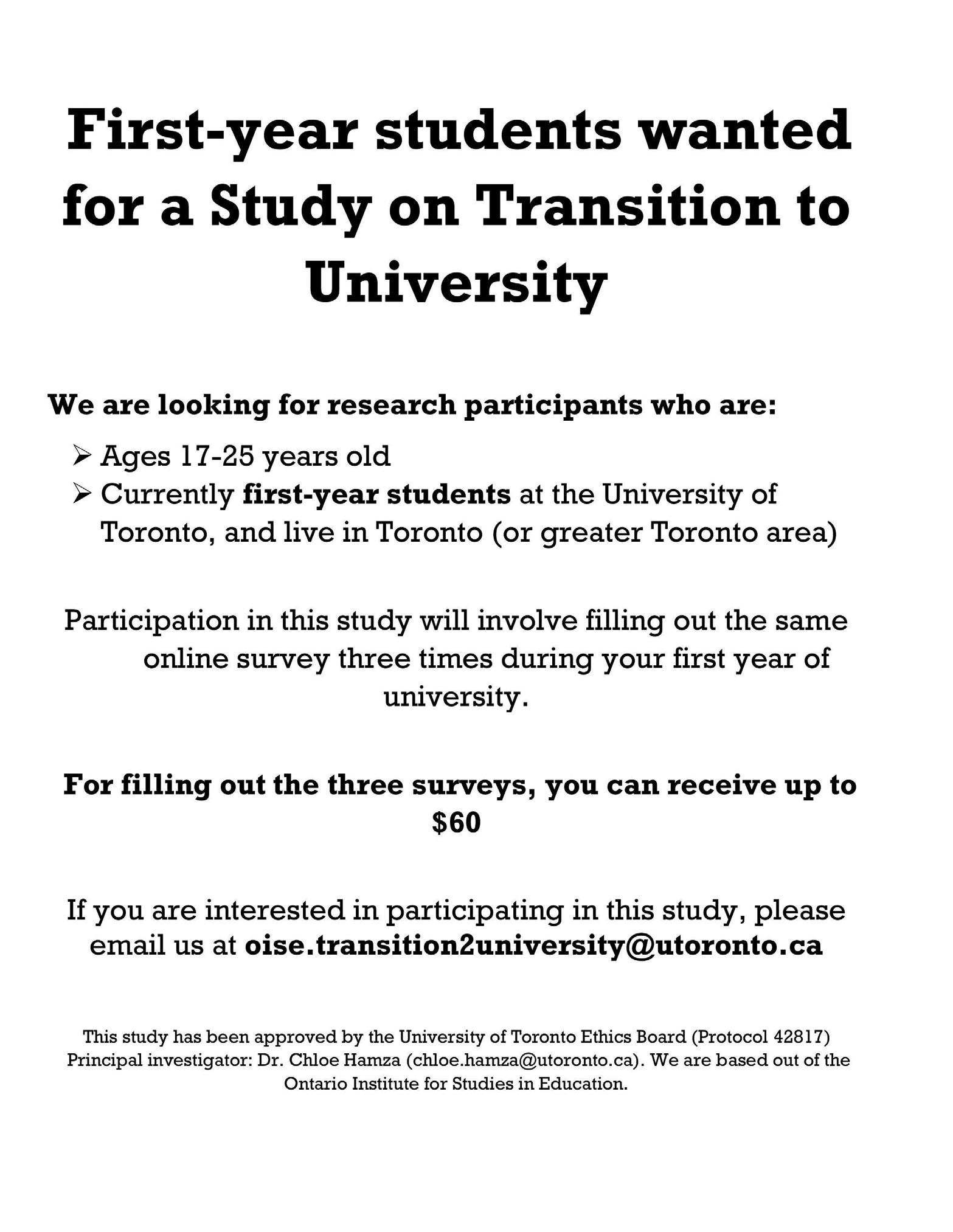
Of the projected $282 million in revenue that Swift is expected to produce, Destination Toronto data estimates that $152 million will come as a result of direct spending on purchases, food, and accommodations, $141 million of which coming from visitors to the city and the rest coming from locals. The city, provincial, and federal governments are set to make $40 million from tax revenue alone from the Eras Tour. Toronto itself will also make an estimated five million dollars to $7.5 million from parking, transit fares, and hotel taxes.
Because of this large volume of revenue entering the city and the influx of visitors, Toronto is making changes to transit schedules and security to ensure the concerts go by smoothly. For example, the GO train will run special ‘latenight’ trips on its Milton Line, for the duration of Swift’s tour. Roads in the downtown core around the Rogers Centre — including parts of Bremner Boulevard, Rees Street, and Blue Jays Way — will also be closed to accommodate the concert, which will likely impact traffic around the region given these roads’ importance to the downtown core and their proximity to the Gardiner Expressway.
Should we “tolerate it”?
According to Ontario Premier Doug Ford and Toronto Mayor Olivia Chow, the benefits brought by the concerts are worth taking these measures to make Toronto an attractive place for performers and artists. Ford said that he “can’t wait” for Swift’s performance. Chow also expressed excitement, and said “Toronto is excited to welcome another major event this November that will contribute
Despite this, it is impossible to deny the amount of traffic and noise the concert will likely bring to Toronto’s already congested core. Many, including U of T students, are concerned that the influx of people could spread across the city and result in six days of traffic jams, packed hotels, and transit crowds in the region.
In an email to The Varsity, second-year architecture student Grace Jiang expressed that though she is a fan of Swift, she is concerned about the concert and its impacts. “For one, it’s going to be really loud, and there might be too much Taylor Swift,” she wrote. Jiang was also worried about the price of Ubers in the city and the crowds that the concert could create. “Ubers are going to be really expensive, and I’m worried that it’ll be hard to get around [on concert nights].”
Given their size and location, the six concerts also bring in security concerns. As of late, concerts have become targets for attacks. Recently, there were threats made to a Taylor Swift concert in Vienna, with two suspects having been arrested. Additionally, other measures the city has taken in order to welcome Swift, such as the temporary renaming of a stretch of Queen Street West and John Street to “Taylor Swift Way” for November, have cost $14,000 to be paid by Rogers.
At the end of the renaming period, the 22 street signs for Taylor Swift Way will be donated to the Daily Bread Food Bank for the charity to auction off and raise funds. Rogers will match the amount raised up to $113,000 — a reference to Swift’s lucky number, 13.
While the revenue the six concerts are bringing into Toronto is undeniable, the exact impacts Swift will have on the city is yet to be determined.

November 19, 2024
thevarsity.ca/section/arts-and-culture arts@thevarsity.ca
Shebonti
Khandaker
Varsity
Contributor
From its seat at the confluence of science and spirituality, mindfulness meditation has grown exponentially popular lately. We’re told that it can make us happier, kinder, and sharper people — but what does ‘mindfulness’ even mean, and what can it teach us about how to better live our lives?
I sat down with Professor Elli Weisbaum from U of T’s Buddhism, Psychology and Mental Health department to answer these questions. Trained in Vietnamese monk and Zen master Thích Nhất Hạnh’s tradition of socially-engaged Buddhism since teenagehood, Weisbaum currently researches mindfulness interventions in healthcare.
As we discussed her work, I was struck by Professor Weisbaum’s gaze — piercing yet placid, looking at, into, and through me, always suffused with the genuine warmth of her smile.
Shebonti Khandaker, The Varsity: Despite the excitement around mindfulness, its definition is contested and most people don’t quite know how it works. Could you tell us about that?
Elli Weisbaum: The concepts of mindfulness are rooted across many cultures and can’t be attributed to any one entity, but my work draws upon teachings grounded in Buddhist practice. Although there are many definitions, I like the description of mindfulness as an observational awareness of our present experiences.
In terms of the ‘how,’ mindfulness is evidenced to cause structural and functional changes in your brain. I share this phrase in classes: “where attention goes, neural firing flows and connection grows.” It’s like mental fitness: the same way different gym exercises train certain muscles, mindfulness — purposefully directing attention somewhere — strengthens certain brain areas. So if someone’s interested in growing more compassionate, evidence for Loving-Kindness meditation shows practical ways to do that!
TV: What is the present-day imperative for mindfulness? More than ever, why are people interested now?
EW: We’re facing a polycrisis of climate change and mental health challenges. There’s a sense of despair that comes from this, but I find hope in the wider recognition of the importance of mental wellbeing. This awareness also motivates interest in the intersection between mental and planetary health: we see more than ever that our systems are connected.
TV: Critics of contemporary mindfulness often highlight its divorce from its Buddhist origins. Some say meditation is impoverished by its removal from ethical imperatives to be loving toward all living things. Can you speak to the necessity for an ethical framework in meditation practice?
EW: From my understanding of Buddhist history; compassion and kindness are core to
for messing up, I’m not activating the neural mechanisms of mindfulness. From a research perspective, these compassionate attitudes are necessary for the benefits of mindfulness like stress reduction.
The cool thing is, studies indicate that caring for ourselves changes how we engage with the world. Nobody exists in isolation; our actions impact ourselves and the world around us. So if you feel overwhelmed right now, care for yourself. Self care is enough already — but what does that allow you to do in the world?
TV: In discussing topics like burnout and mental health, we acknowledge that structural qualities of our institutions foster suffering. Mindfulness interventions are just that — interventions, right? What can be done here to create larger systemic changes, as opposed to intervening when systems inevitably hurt people?
EW: We don’t want to put the burden of burnout onto the individual. We need to recognize that systems can cause harm and saying you should ‘fix it yourself’ isn’t safe or reasonable. What interests me is mindfulness’ recognition that individuals and systems aren’t separate, but interacting parts of an ecosystem.
Socially-engaged Buddhism positions mindfulness as a way of caring for oneself and others in the pursuit of systemic change. Cultivating love within myself lets me extend it to my spheres of influence and each person can practice that within their own spheres. I’ve seen real change through these practices in who we are and how we interface with our communities.
TV: A lot of discourse around mindfulness focuses on its quantitative benefits. However, its roots are inherently spiritual. How should the average practitioner reconcile this divide? Is spiritual deepening something we look for each time we meditate, or is it a niche goal for nonsecular meditators?
EW: Many find meditation because they’ve heard it reduces stress and anxiety, which is awesome. But limiting meditation to these benefits limits our experience of the phenomena. Language is limited, and to give language to lived experience is almost impossible.
Hạnh tells this story about his hermitage in the woods: one day, he forgot to close the windows when leaving. When he returned, the wind had blown out the fire and scattered his papers. So he went in, slowly closed the windows, organized the papers, and relit the fire. When we start practicing mindfulness, it’s just like that story.
Mindfulness teaches you how to come home to yourself. The first step is like walking into that cabin. If we haven’t cared for our cabins, there may be a mess at first. If you try mindfulness, don’t say it didn’t work if you discover you’re a mess inside! Often, that’s where we start. If someone’s trying it for the first time, they might think it’s made them more anxious. But maybe mindfulness just made them more aware of

TV: What do you find when the home is clean?
EW: When we’re not caught in the attentional flow of our worries and fears, we can see clearly what’s there. When you can see who you are and how connected you are to the whole universe, you sometimes have this kind of… opening. It’s hard to describe the connection to things beyond yourself which is found through stillness.
TV: I find this mess analogy interesting, because popular understandings of Buddhist meditation presuppose that human suffering comes from hunger or desire. But to what extent are mess and desire inherent to the human condition? Do we engage in a harmful stigmatization when we practice distancing ourselves from them?
EW: The idea that mindfulness asks us to detach ourselves from desire is inaccurate. The teachings don’t embody a good or bad binary, but an attitude of embracing and carefulness. Seeking positive feedback is part of being human. But what does my desire indicate, and what actions do I take accordingly? Desire tells me there’s something I want here and I should look into it. That’s not bad, it’s fun! With things like sexuality which can be shamed in society, we don’t want to turn our desires off, but to ask, “What is a skillful expression of this? How do I infuse my actions with the orientation of curiosity, kindness, love and care?”
TV: This reminds me of a paper you discussed in class for BPM438 — Mindfulness Meditation: Science and Research on Loving-Kindness Meditation, "Empathy and compassion." It beautifully distinguishes between empathic distress and compassion, where the former is an untrained, painful response that encourages retreat, and the latter is the mindfully-trained response of recognition and a desire to help.
EW: Exactly! It’s about gaining the skill to selfregulate when challenges take us offline. If we can’t prevent getting overwhelmed by others’ suffering, we collapse too. We need tools to digest challenges in a safe way that encourages compassion for ourselves and others. We’re not training to never be upset. We’re training our resilience: what to do when difficult things inevitably happen to us.
TV: Speaking of ‘online,’ endlessly scrolling
source of empathic distress for many. Simultaneously, back to the issue of hunger, we’re increasingly primed to consume more and more stimulating digital content. Can mindfulness teach us to address these technological challenges?
EW: Attention is a huge commodity, right? People vying for our attention are taking something that belongs to us. How do we take back our agency? Some of my own anxiety comes from ‘doom scrolling.’ Yet, it’s important to know what’s going on in the world. If we put our heads in the sand, we’re not standing up for things that matter.
Recognizing the impact of social media is itself a mindful act. If you don’t stop and look, you won’t realize how you’re being pushed and pulled by your phone. Mindfulness helps in making thoughtful choices about technology, like “I want to know what’s going on in the world, but I’m limiting myself to this much [news] reading.” These skills can calm our nervous systems enough to recognize the stimuli impacting us.
TV: What do you mean ‘calm’ our nervous systems?
EW: From a scientific perspective, with difficult stimuli like an angry text or bad grade, the body receives information and responds accordingly. The Buddhist teaching of the Four Nutriments looks at what we consume beyond edible foods — conversations, news, even the vibes of a room. Like what we eat, this consumption affects our bodies.
With the mindfulness framing, we ask how these affect your nervous system. The system in your body that prepares you for fight-or-flight might be triggered by things like social media which overwhelm us, agitate us, and even harm our sleep. So when we say caring for your nervous system, we’re recognizing the inputs we’re consuming and looking after ourselves accordingly.
TV: Which returns us to the idea of learning to live with uncertainty.
EW: Exactly — we aren’t practicing mindfulness to prevent fear or anger. We’re not saying we shouldn’t be messy, complex creatures. I’m problematic and messy all the time! We’re practicing it to meet ourselves in these states with kindness and openness. It’s not about avoiding or suppressing, it’s a philosophy of turning towards and embracing.
This interview has been edited for length and

On September 13, 2007, the United Nations Declaration on the Rights of Indigenous Peoples (UNDRIP) — currently the most extensive international guideline on the rights of Indigenous peoples — was adopted with a majority of 143 states. Canada was not one of them.
Canada was hesitant to adopt UNDRIP due to concerns that it would contradict its national laws. Nearly 14 years later, in June 2021, Canada passed the UNDRIP Act as a commitment to “protect, promote and uphold the human rights of Indigenous peoples in Canada.”
But even after adopting UNDRIP and affirming that it is an important source for new laws and policies, Canada has failed to transfer this in application. Indigenous peoples, both locally and internationally, have continued to struggle at the hands of Canadian extraction companies.
About half of the world’s publicly listed mining and mineral exploitation companies — which operate on land all over the world — belong to Canada, making the country an extractive superpower. With all this power comes a degree of responsibility to ensure that the companies’ projects are conducted humanely. Yet, as the years go by, more and more stories have come to light exposing the cruelty behind these projects.
To address the abuses caused by these mining projects, Canada has participated in numerous initiatives, including making international commitments, such as eventually joining UNDRIP, that emphasize the rights of Indigenous peoples. But, Canada has also played an active role in ignoring and masking abuses from mining and extraction companies. In a sense, while the Canadian government advertises practices which protect Indigenous rights, it acts contrary to these principles and norms.
Indigenous human rights abuses in Canada
Despite promises by the Canadian government to solve the issue of contaminated water on First Nations reserves by 2021, there were 618 First Nations communities with inadequate access to clean water just last year. In communities with water safety advisories, not only can drinking water be dangerous but also brushing teeth, bathing, and cooking with water.
Moreover, contrary to the Canadian government’s commitment to Indigenous peoples’ right to selfgovern, extraction and construction projects such as the Wet’suwet’en pipeline continue to operate on Indigenous land against the wishes of Indigenous leaders. These are just two examples, but these alone send the message to Indigenous peoples that the government’s promises to respect their right to their land are empty words, and that they will continue to prioritize economic interest over the livelihoods of Indigenous peoples.
In addition to the Wet’suwet’en pipeline, Canadian gold mining projects along the border between Alaska and British Columbia have been violating the rights of Indigenous peoples for decades. Along with exploiting their land without their consent, the mining projects risk the poisoning of the surrounding salmon-rich Taku, Stikine, and Unuk Rivers, which are water and food sources for Alaska’s Indigenous communities.
Despite having received a petition against the project in 2020 from the Southeast Alaska Indigenous Transboundary Commission — an
organization of 15 First Nations who work to protect their rights to their land — Canada continues to allow the exploitation of Alaska’s Indigenous land today.
The Indigenous peoples of the Winneway, La Corne, and La Motte municipalities in Québec are also currently facing concerns about water and food quality, with a lithium mining project taking place on their land. In March 2022, the Council of the Long Point First Nation sent a letter to Québec Premier François Legault’s government, asking for an investigation into the environmental risks of the project.
However, Long Point First Nation Chief Steeve Mathias told CBC in 2022 that the Long Point community distrusts the government to adequately inform them of these potential risks, and are looking to conduct their own investigation.
The cases of Mexico and Guatemala If Canada has no problem exercising this hypocrisy in their own country, there is nothing stopping them from committing abuses against Indigenous communities abroad. One such case resulted in the murder of Mexican activist Mariano Abarca.
Between 2007 and 2009, the Canadian mining company Blackfire Exploration Ltd. was operating in the municipality of Chicomuselo, in Chiapas, Mexico, which is home to Mexico’s Indigenous peoples. In response to Blackfire’s unwanted presence on his land, Abarca led protests motivated by environmental concerns — specifically about the water shortage and contamination in the rivers that flow in the highlands of Chiapas.

The Canadian Embassy responded by sending a high-level delegate to the office of Chiapas’ Governor Juan Sabines Guerrero to advocate for Blackfire. Seven weeks later, Abarca was murdered in broad daylight.
This case was swept under the rug, with Canada’s Public Sector Integrity Commissioner (PSIC) refusing to investigate the case. The PSIC is an oversight office responsible for investigating wrongdoings in the federal public sector, and protecting those who report wrongs from reprisal. Another significant case of abuse was in Guatemala. In 2006, the Canadian company Goldcorp Inc. bought the Marlin gold and silver mine in Chiquimula and the western highlands of Chimaltenango and San Marcos. Goldcorp began mining for gold on the land of five Mayan communities, comprising around 10,000 inhabitants. This project led to significant environmental harms, including polluting local communities’ major water sources, and failed to uphold the ethics Goldcorp’s Marlin Mine project reportedly sought out to follow, of
“transparency, independence, and inclusion.”
“My land is what you saw in the pit today, and now I have nothing,” said Maya resident, Emeterio Perez, about the land he was forced to sell to Goldcorp’s mining project.
In a public letter, signed “Communities in Resistance,” the Mayan people of the Guatemalan municipality San Miguel Ixtahuacán explained, “When the company arrived in the communities, they said that they were going to do a field study and set up a project for the production of orchid plants in order to generate work for the communities. In this way, they tricked the communities into the sale of lands, even though the communities defended their rights and rejected the company’s plans.”
In June 2010, this case was brought to the Inter-American Commission on Human Rights, which is an organ of the Organization of American States: an inter-American organization that aims to act as a regional development agency in the United Nations (UN) and protect human rights across the Americas. The commission said that the Guatemalan government must suspend the activities of the Goldcorp mine until the issue of safe drinking water is sorted out.
In response, Canada ignored the court’s independence and intervened in the case. The Canadian embassy and Goldcorp both spoke directly to the former Guatemalan president Álvaro Colom urging him to ignore the commission’s orders. When the Guatemalan government ignored Canada’s request and followed through with the Commission’s orders, Canada decided to raise the issue directly with the commission.
A few months later, after pressure from the Canadian government, the commission withdrew
its suspension of the gold mine in December of 2011, and Goldcorp’s project resumed. The project closed in May 2017, but Goldcorp was purchased by an American mining company — Newmont Mining Corporation — which has been attempting to reopen the project since April 2019.
Canada deceived the Indigenous communities in Guatemala, stole their land, and then proceeded to destroy it through their mining projects.
In both Guatemala and Mexico, it seems like Canada’s true intentions are not to protect Indigenous peoples but to protect Canadian companies’ profits. Canada has enabled its companies’ abuses instead of protecting the rights of Indigenous peoples — a commitment it claims to value so strongly.
Canada has been a hypocrite by establishing a national day to commemorate Indigenous groups while simultaneously destroying Indigenous homes both locally and abroad. It has also been deceptive in expressing unwavering support for institutions that aim to protect Indigenous rights while using those same institutions to get away with their Indigenous rights abuses.
Panama and Ecuador
On November 28, 2023, a Canadian mining company — First Quantum Minerals (FQM) — signed a 20-year contract with the Supreme Court of Panama to work in the Cobre mine. This project, which accounted for five per cent of Panama’s GDP, also posed the risk of contaminating drinking
water and deforesting 32,000 acres of land.
The group most affected by this issue? The Ngäbe-Buglé people: Panama’s largest Indigenous tribe.
The Ngäbe-Buglé people fought for selfdetermination to preserve their territory, and it was ultimately their protests that caused the Supreme Court of Panama to rule that the contract was unconstitutional.
While this case ended in success for the NgäbeBuglé people, with Panamanians celebrating the mine’s closure, the Canadian company did not see it that way. FQM responded to the court’s decision by suing Panama at the International Court of Arbitration under the Canada-Panama Free
companies operate in Ecuador, some of which are facing allegations of “abuses and working in ecologically sensitive areas, according to Mining Watch Canada.” To address these abuses, the confederation “wants Canada to not sign anything unless Indigenous peoples in Ecuador give their free, prior, and informed consent.”
Panama and Ecuador are just two recent examples of Indigenous groups who resisted extraction companies’ invasion of their land through protesting or attending conferences. There are many more cases in which Canadian mining companies make agreements with corrupt governments, silencing the voices of the Indigenous peoples that go unheard and unaddressed.
Relationship between host states and Canada in Indigenous rights violations
Host states, Canadian mining companies, and Canada all are at fault for this issue in different ways. The host state — which is the state where
advantage of their poor economic conditions and offer them revitalization through industrial projects. Canada, then, plays arguably the largest role in these abuses.
Shin Imai is a professor of law at York University and a co-founder of the Justice and Corporate Accountability Project (JCAP) — a transnational initiative that works with volunteers to spread legal information to communities that are harmed by natural resource extraction. By spreading the legal information extraction companies fail to relay to the communities whose land they are exploiting, JCAP aims to prevent these companies from further getting away with their abuses.

Trade Agreement, which allows for a company to sue a state and focuses on labour cooperation and the environment.
FQM sued Panama for breaching their free trade agreement, and demanded compensation for the economic damage caused by Panama’s closure of their mines at the end of 2023. Still, Panama held its ground against the Canadian mining company, and the case is ongoing with a hearing scheduled in September 2025.
This behaviour of pressuring a foreign state to agree to unfair and inhumane contracts is not unusual for Canadian companies. In October, during a news conference in Ottawa, Amnesty International brought four Indigenous women delegates from Ecuador to discuss the issue of Canadian mining companies violating Indigenous peoples’ rights with federal leaders on Parliament Hill.
Zenaida Yasacama — part of the Kichwa Ancestral People of Pakayaku and vice-president of the Confederation of Indigenous Nationalities of Ecuador, the country’s largest Indigenous rights organization — stated that Canadian mining companies “violate the rights of nature [and] violate our right to self govern.”
Yasacama pointed out how the projects are polluting the water and land of the Kichwa Ancestral People of Pakayaku. Currently, 15 Canadian mining
the extraction projects occur — is responsible for allowing companies to operate on Indigenous land within the host state’s territory. In doing so, the host state overlooks the Indigenous peoples’ right to self-determination and self-governance.
It’s easy to argue that the host state plays a larger role than the companies since it is the one permitting the companies to operate on Indigenous land. After all, under capitalism, most companies are motivated by profit. Ideally, the host state’s government should keep companies in check so they do not choose profit at the price of the common good. However, many of the host states where Canadian mining companies operate face issues of conflict and instability.
Both Panama and Ecuador already face internal issues of corruption. Freedom House is a US nonprofit organization that assesses “the condition of political rights and civil liberties around the world” based on a country’s political rights and civil liberties. According to its 2024 report on Ecuador, the country has faced a rise in violent crime in recent years which has caused its global freedom status to move from ‘Free’ to ‘Partly Free.’ Its 2024 report on Panama also states that “corruption and impunity” are ongoing issues in Panama’s justice system and government.
While the host states undoubtedly play an inexcusable role in the violation of Indigenous rights, their socio-political instability makes them vulnerable to the whims of companies based in more powerful countries like Canada, that can take
In an interview with The Varsity, Imai spoke on Canada’s role in abusing countries to exploit their resources. Imai explained that Canada has the responsibility to provide oversight over public goods and individual and collective conduct, which means both setting up and enforcing standards for the conduct of transnational companies and projects.
In the case of transnational mining and extraction companies, then, it is the Canadian government’s responsibility to monitor these companies’ conduct and ensure that they are following national and international guidelines, such as those established by UNDRIP, when they operate on Indigenous land.
All of this said, Canadian mining companies should also be held responsible. While states have responsibilities and commitments, so do companies. In this case, Canadian mining companies have the responsibility of conducting their affairs within legal boundaries. This would include, for example, ensuring that Indigenous groups have Free, Prior, and Informed Consent (FPIC) before having their land operated on.
The truth behind ‘reconciliation’
All these cases clearly show that there is a grave issue of Indigenous rights being violated by extractive companies and that the Canadian government is playing a role in this issue. Canada continues to fail to take accountability by continually ignoring their commitments to Indigenous rights.
To orchestrate its efforts for retribution, the Canadian government has established a National Day of Truth and Reconciliation. They have accepted Indigenous rights practices such as FPIC and Corporate Social Responsibility — a business model that encourages businesses to consider their social, ethical, and environmental impacts and responsibilities. But these principles and systems only feign accountability. They are weakly enforced.
The principles and systems set up by Canada have proven to be miserable failures in upholding Indigenous rights abroad. Canada has failed to provide governmental oversight and enforce environmental and human rights standards. The cases of Mexico and Guatemala show that in addition to Canada’s failure to respect and protect the rights of Indigenous peoples, its actions have also been outright deceptive.
Even after the Liberal Party’s commitments to uphold and respect Indigenous rights since 2015, Canada has failed to stop new projects from operating, creating more consequences for the livelihoods of Indigenous peoples.
In 2014, the Canadian mining company Lundin Gold bought the Frutal del Norte gold mine in Ecuador, and has been operating on the land since 2019. The local Indigenous communities have expressed concerns about their livelihoods, as the project “has long been accused of negatively affecting local flora and fauna, contaminating water, and causing significant psychosocial harm through police repression,” according to a 2024 report by MiningWatch Canada.
Despite these concerns and the lack of Indigenous peoples’ consent to operate on their land, Lundin Gold claims to “engage with the Shuar and Saraguaro Indigenous peoples who live in Fruta del Norte’s area of influence” and to “promote the preservation of [their] identity, cultural knowledge, customs and traditions.”
The Canadian Liberal government has actively claimed to support Indigenous self-governance rights, yet they continually exploit Indigenous
territories and turn a blind eye to Canada’s mining companies’ abuses.
A large part of why this issue of Indigenous rights abuses by Canadian extraction and mining has gone on for so long is the lack of accountability.
On April 8, 2019, lawyer Sheri Meyerhoffer was appointed the first Canadian Ombudsperson for Responsible Enterprise (CORE) after pressure from human rights activists to enforce standards of ethical business conduct. Her role was to investigate “human rights abuses arising from the operations of Canadian companies abroad.” CORE was made in an effort to ensure that Canadian companies in the oil and gas, mining, and garment industries were respecting human rights norms, such as those set up by the UN.
Eight months later, “after… heavy lobbying from the mining industry, all the powers were taken away,” according to Imai. The ombudsperson was stripped of their independence from the Canadian government, and only given enough power to undergo reviews of what the corporation willingly provides about their intentions, rather than conduct independent investigations about whether these proclaimed intentions are sincere.
As a 2020 report by the Canadian Network on Corporate Accountability put it, CORE “appears to have been designed with more concern for industry perceptions than with supporting the human rights of impacted communities.”
Imai explained that with these new amendments, the ombudsperson simply lost all powers, leaving very little room for effective investigations. Without legal investigations and recognition, there is no government accountability for their violations of Indigenous rights.
When asked about the future of this issue, Imai emphasized the importance of proper investigative powers. The first step to solving this issue is exposing the truth. But I don’t believe truth comes with false promises by corrupt systems claiming commitment to “truth and reconciliation.” It comes from establishing transparent, honest systems.
In pursuit of justice and honesty
In addition to establishing open investigations and advocating for Indigenous rights, legal action can lead the government to take accountability for its actions.
The JCAP has gathered legal experts and collaborated with organizations, universities, law firms, and Indigenous communities to work toward community self-determination, corporate accountability, and transnational legal activism: practiced by members of the law to bring justice to victims and hold perpetrators responsible in transnational issues.
In March 2021, the Federal Court of Canada dealt with the access-to-information lawsuit brought forth by Imai, who had received redacted records concerning Canada’s intervention in the human rights case against Goldcorp in Guatemala. For the case, entitled “Imai v. Canada,” the JCAP collaborated with several Canadian non-governmental organizations (NGOs) such as Amnesty International, and the Canadian Network for Corporate Accountability to disclose why the Canadian government was pressuring the Guatemalan government.
But action doesn’t always have to be through NGOs and legal experts. It can also be through individual activism — something which all Canadian citizens can and should partake in. This can be done by using your area of expertise — whether it is academic, legal, or media — to spread awareness about human rights violations against Indigenous peoples all over the world. From joining diverse groups like JCAP to using your voice on public platforms, we as Canadians have the opportunity to be part of this discussion. This issue is not just about protecting Indigenous rights and land but also about taking individual responsibility for the role we play as citizens. It is our responsibility to use our voices and hold our governments accountable for their misconduct and shortcomings. This issue is as much a product of our silence as it is of the government’s enabling of its companies.
When corporations and governments present illusions of protecting and advocating for Indigenous rights, it is our responsibility to take action; to advocate and to partake in initiatives and projects that focus on responsibility and justice; and to reveal the truth and work toward effective accountability.
November 19, 2024
thevarsity.ca/category/opinion opinion@thevarsity.ca
Mohamad Yassin Varsity Contributor
Content warning: This article discusses Islamophobia, anti-Palestinian racism, anti-Arab racism, and antisemitism.
On September 6, far-right agitators confronted pro-Palestine student protesters at King’s College Circle. Among these agitators was Meir Weinstein, the former leader of the Jewish Defense League (JDL) — whose American branch was designated as a terrorist group by the FBI. Members of the JDL have been convicted of multiple bombings and an attempt to hijack a plane.
At the same confrontation, the far-right protesters openly displayed violent and dehumanizing slogans such as “Make Gaza a parking lot.” They also hurled racist and Islamophobic slurs, and yelled “Get out of Canada. This is our country.” Ron Banerjee, a notorious Islamophobe, led the chants. Furthermore, these extremist agitators unfurled flags of Kahane Chai, a Jewish entity that advocates for expelling Arabs from Israel, and is a far-right terrorist group as designated by Canada.
Other vigilantes from JForce, a private security firm and self-described “defenders of Israel,” roamed the campus in groups dressed in black uniforms and tactical vests. Meanwhile, Magen Herut — an extremist group based in Canada — was also spotted on campus, creating an intimidating atmosphere for Muslim students.
As the President of the Muslim Students’ Association (MSA), it is clear to me that the U of T administration has failed to protect its Muslim and Arab students, along with their peers and allies. To me, this failure demonstrates an indifference to these students’ safety and reveals institutional biases.
Extremism on the rise
These right-wing protesters are not just agitators — they are connected to extremist organizations with histories of violent extremism.
Weinstein runs an organization, Israel Now, that promotes physical confrontations with proPalestinian supporters and spreads anti-Muslim hate. Despite being banned from York University after a violent altercation with students in 2019, he continues to be allowed at U of T.
Additionally, Magen Herut publicly advocates for Israeli expansion and Jewish indigeneity in the land.
The right-wing extremist protesters’ display of the Kahanist flag is a clear attempt to intimidate Muslim and Arab students. Waving the flag of a terror group should result in arrest followed by swift condemnation. But in the university’s case, the agitators displayed the flag with campus police present and no action was taken.
This growing wave of Islamophobia and antiArab violence is reflected in the rest of North America. In the past year, a man murdered a sixyear-old Palestinian-American boy in Illinois, and another man ambushed and shot three Palestinian college students in Vermont. Additionally, farright counter-protestors attacked peaceful proPalestinian student protestors at the University of California, Los Angeles.
In Canada, during October 2023, there was a 1,300 per cent surge in Islamophobic incidents, including attacks on mosques and against visibly Muslim individuals — particularly women who wear the hijab.
Safety for all?
Despite our repeated requests to take Muslim students’ concerns seriously, the administration remained silent for weeks after far-right groups were on campus in September. It was only on October 3 that the administration responded

privately to us in an email that “free speech laws” of the school’s policy on freedom of speech protect individuals’ opinions even if they are “controversial or unpopular.”
After over a month of further pressuring the administration, MSA executives escalated the situation to U of T’s Vice-President, People Strategy, Equity & Culture Kelly Hannah-Moffat and Vice-President and Provost Trevor Young. On November 5, the senior administration finally privately conceded to the MSA over email that the incident was indeed Islamophobic and included anti-Palestinian discrimination.
But sadly, the university has already fuelled dangerous rhetoric and misinformation. When students organized the King’s College Circle encampment to protest the university’s potential complicity in Israel’s genocide of Palestinians — the subject of investigations by the International Court of Justice — U of T responded by characterizing the encampment as hateful and violent, which I see aligning with the racist trope that Muslims and Arabs are inherently antisemitic.
Yet, I saw that the encampment included members of diverse backgrounds, including Muslim, Jewish, and Indigenous students, staff, and faculty. And, despite a court ruling that the protest was peaceful and not antisemitic, the university still did not retract its false inflammatory claims.
Actions speak louder
Contrasted with how the administration treats Muslim and Arab students and their allies, I see it acting swiftly when Zionist Jewish students express concerns.
For example, the university quickly cut ties with former Muslim chaplain Imam Omar Patel for allegedly posting antisemitic social media posts
The Toronto Police Service is inciting public fear just to increase funding

In January, Toronto Mayor Olivia Chow faced backlash from the Toronto Police Service (TPS) for proposing $1.35 billion for the TPS in the city’s 2024 budget draft. This was an increase from 2023’s $1.16 billion but about $12.6 million less than recommended by the Toronto Police Services Board.
The TPS Board initially requested a $20 million increase in the police operating budget to hire 306 new officers by the end of the year. TPS Chief Myron Demkiw argued that Chow’s proposed “cut” to the requested budget would create an “unacceptable risk” to public safety. Chow initially defended the $1.35 billion budget, but ultimately finalized the full $20 million increase in the final budget in February.
Much of the pressure on Chow to meet the TPS Board’s budget recommendations seems to stem from the public assumption that higher police budgets lower crime rates. The TPS-led social media campaign #SupportYourTPS reinforces this assumption by equating slower emergency response times with reduced staffing due to perceived budget cuts from the January report. However, a 2023 study led by U of T shows an inconsistent relationship between police funding
and crime rates in Canadian municipalities. In light of this, I feel that TPS’ emotional appeals to danger and protection are primarily intended to increase their budget rather than to promote public safety.
The narrative of #SupportYourTPS In February, the Toronto Police Association (TPA) — which manages TPS — launched an advertisement that suggested slower emergency response times are actively endangering Torontonians due to budgetary restraints. The advertisements go so far as to display alarming and violent imagery, including scenes of a person held at gunpoint, and a child’s toy left ominously on a swing set — while highlighting TPS’ average emergency response time of 22 minutes.
The TPS also began their #SupportYourTPS campaign following Chow’s tentative January budget release.
While I argue that the TPA advertisement’s imagery is drastic and unnecessary, it is probably quite effective. According to 2022 TPS community survey data, 72 per cent of 1,200 respondents feel that TPS is meeting their neighbourhood’s safety needs. Additionally, in February, the Toronto Police Association shared a poll from surveying firm Liaison Strategies, showing that only 48 per cent of respondents approve of Chow’s work dealing
with crime. As reported by Liaison Strategies in February, survey respondents perceive Chow to have a weak approach and underfunding toward crime management.
In my opinion, the feedback from these surveys is unsurprising, given the TPA’s willingness to exploit public feelings of panic through unsettling imagery in advertisements.
The American Psychological Association outlines two key components of successful fearmongering: inspiring fear about a particular issue and then establishing oneself as the best qualified to address this cause. The desired outcome is that, swayed by fear, the public will seek safety in numbers and base their political decisions on those who promise to alleviate their panic.
The TPS’ strategy of creating a perceived enemy — the criminal — conveniently allows them to position themself as the sole means of addressing crime, as opposed to other de-escalation methods or community-based solutions. Furthermore, these tactics often involve obscuring evidence, which brings to mind Chief Demkiw’s misleading comments about nonexistent budget “cuts.”
Correlation between cops and crime
In addition to blatantly misrepresenting Chow’s budget proposal by suggesting there was a budget
that were attributed to him, despite inconsistencies suggesting the screenshots may have been manipulated. Yet, when a teaching staff member of the Governing Council, Professor Ramy Elitzur, compared Jewish pro-Palestinian protestors to Nazis, the university took no action.
In September, President Meric Gertler delivered remarks about antisemitism on campus, where he invoked the university’s shared responsibility to ensure all students are free from “discrimination or harassment.” However, given the university’s repeated neglect of Muslim students’ concerns, the administration’s selective concern is glaring.
The MSA’s internal polling at the end of September revealed that 80 per cent of 242 respondents stated that they feel unsafe or somewhat unsafe on campus. A staggering 96 per cent felt that the administration has not addressed their concerns regarding student safety.
We urge the university administration to handle the safety of all student groups equally and, at minimum, take immediate action. Acknowledgements and apologies are not enough.
The university must officially ban dangerous individuals, such as Weinstein and Banerjee, from campus permanently to show that the administration takes student safety seriously. Furthermore, after five years of communicating with the administration, the university must follow through with its promises to launch a functional working group to address Islamophobia, anti-Arab, and anti-Palestinian racism on campus.
This working group is crucial to addressing the harm caused by the administration’s neglect and to begin the long path to repairing broken trust.
Mohamad Yassin is a second-year master’s student studying electrical engineering. He is the president of the Muslim Students’ Association.
cut when there was in fact an increase, I believe the #SupportYourTPS campaign reinforces the belief that criminalization, surveillance, and state oversight are the keys to ensuring public safety. I would assume that for many people, it may seem logical that increased policing would lead to decreased crime. However, the study led by U of T concluded that, despite police funding being a top budget priority in most municipalities, there is no strong correlation between police funding and crime rates.
The TPS’ narrative on policing and crime prevention is all the more alarming when the same U of T study reveals that all but two Toronto municipalities had a net increase in police funding per capita between 2010 and 2020 — despite the increase having no correlation with crime rates. This study provides critical insights into the relationship between police funding and crime, but it also raises an important question: how can we address crime if not through state measures like policing and incarceration?
Divesting from the police can include redistributing policing funds to social safety nets that address the root causes of crime, such as expanding the city’s shelter system, funding the Toronto Community Crisis Service, and implementing 24/7 warming centres.
Local coalitions such as the Toronto Citizens Collective and Shelter and Housing Justice Network are demanding that Chow prioritize community support in the next budget cycle — and I wholeheartedly agree. Going forward, I urge Torontonians to remain critical in the face of familiar scare tactics.
Emma Dobrovnik is a fourth-year student at St. Michael’s College studying political science and criminology. She is the president of the Association of Political Science Students and a Domestic Affairs columnist for The Varsity’s Opinion section.
Doug Ford needs to visit the optometrist — he has tunnel vision

Sulaiman Hashim Khan Varsity Contributor
You may have heard about the latest great idea emerging out of the respected chambers of Queen’s Park. Ontario Premier Doug Ford and his government have proposed a 55-kilometre tunnel running beneath Highway 401, stretching from Mississauga in the west to Scarborough in the east.
This isn’t all though — Ford’s Minister of Transportation, Prabmeet Singh Sarkaria, also introduced Bill 212, which would give the province greater authority over municipalities to dictate the construction and deconstruction of bicycle lanes.
As a U of T student, you may have also noticed that the TTC subway has been experiencing significant issues. Many of us, including myself, rely on Line 2 to get to campus every day, and I can’t remember the last time I rode it without facing delays or disruptions due to the ongoing track work or security issues. I’d also like to remind you of the disastrous derailment of Line 3 last summer, which removed a crucial link between Scarborough and the GTA.
The problem extends beyond the subway. Even one of the city’s busiest streetcars, the 510 Spadina, has been on pause since June so that sparsely present crews complete critical track renewal and modernization work for the overhead power network, which is not expected to end until December.
Ultimately, I believe all of these issues stem from decades of the provincial government’s
underfunding and neglect of a fundamental service in the province’s economic centre.
Setting priorities
The TTC moves nearly two million people across the GTA every day. So, when the transit system in the province’s hub is in such a frail state, I can’t help but ask: why is the province considering funding anything other than the transit system’s upkeep and expansion, especially when they claim to want to get us moving? The irony of an actively anti-pedestrian, anti-bicycle, and staunchly stagnant government using the slogan “Getting Ontario Moving” is astounding to me.
Research such as the 2018 report from Europe’s Department of Transport has proven time and time again that making the downtown core more accessible through pedestrian-only areas and maintaining bike lanes throughout the city not only increases accessibility but also boosts economic activity — especially for small businesses.
In an interview with CityNews, Shoshanna Saxe, an associate professor of civil and mineral engineering at U of T, estimated that Ford’s proposed tunnel under Highway 401 would take 20 years to build and cost one billion dollars per kilometre. For reference, a kilometre of subway in Toronto costs around $700 million to build.
More lanes — whether adjacent to or below existing roads — will inevitably reach capacity much faster than other forms of transportation. The billions wasted on the tunnel would be better invested in improving public transit. More workers
Flawed journalism is costing Palestinians their lives
Opinion, fact, and the delusion of journalistic neutrality
is exactly what permits the dehumanization of Muslim and Arab communities and diminishes outrage over issues like genocide.
and better equipment could lead to quicker completion times, and a more efficient city — not to mention how I think a more balanced budget could allocate funds to address other critical issues in the city such as housing.
Building a tunnel under a highway or removing bike lanes will not alleviate congestion; it will only increase car traffic in the city’s core. In contrast, rail options like the TTC and GO Transit reduce congestion by moving hundreds of thousands of people without a huge two-ton machine that only takes up more space with them.
When the TTC pauses services, shuttle buses with lower capacity and speed are often used. If we continue to neglect the TTC, the motorist’s worst nightmare will come true: more cars on the road. As the TTC continues to deteriorate, tens of thousands of people who once relied on public transit will be forced back onto the road, exacerbating the congestion and terrorizing the solitary commute.
Right lane, left-wing?
Transit has become a political issue when it should value a neutral development. Culling car dependency has somehow become a point of contention in the larger culture war between political parties.
The downtown Ontario Line subway, which would connect the Ontario Science Centre to Exhibition Place once completed in 2031, has been a political ping-pong ball for over 30 years. Since the mid-twentieth century, discussions about a “Downtown Relief Line” have plagued
political discourse between the province and city and their rotating administrations.
In my view, the politicization of infrastructure projects explains why sensible initiatives like the Ontario Line often coexist with flashy, shortsighted proposals like the 401 tunnel, as they serve as political distractions: little treats to dangle in front of both urban progressives and exurban conservatives when a government’s approval ratings go underground.
But the government of Ontario is not the government of Toronto, and Ford is not our mayor. When he ran and lost in 2014, it was a clear message that we did not want him. We should not excuse whatever compels him to meddle so deeply in municipal government to go as far as dictating what individual streets should look like.
All contributions from the province must be filtered through City Hall to ensure that they align with the sensibilities and needs of Torontonians, not with retirees from Oakville making their biannual drive into the city who are terrified by a little traffic.
Government is most effective when power is concentrated in the hands of direct representatives, and the various strata of our province must understand the responsibilities that come with their mandates — and stay in their lane.
Sulaiman Hashim Khan is a fourth-year student at St. Michael’s College studying English and ethics, society, and law.
Content Warning: This article describes death and the ongoing violence in Gaza.
In journalism, phrases like “non-partisan” and “objectivity” are not only guiding principles but also cornerstones of quality coverage. In theory, journalistic neutrality is an excellent idea for regulating news sources. However, I don’t believe true neutrality exists.
I think the Toronto Star distinguishes between news and opinion writing. The paper states that, “To be impartial does not require a news organization to be unquestioning or to refrain from editorial expression,” but that “all content that contains explicit opinion or personal interpretation should be clearly identified as opinion or analysis, as appropriate.”
Our understanding of neutrality is often limited to this news and opinion distinction. However, in reality, I argue that neutrality or the lack thereof often manifests in ways beyond this surface-level divide. Characterizing neutrality as the opposite of opinion or bias overlooks how the process of exercising neutrality happens long before a story is put on paper. Today, this is most evident in the case of Israel’s genocide of Gaza.
The myth of objectivity Neutrality first comes into question in the newsroom, where journalists decide which stories to cover and which to ignore. Omitting these nuances in blanket definitions of neutrality
I find the lack of neutrality in today’s journalism deeply abhorrent. Coverage has shown a stark disparity between Palestinian and Israeli fatalities. The death toll in Gaza has reached nearly 43,000, including almost 17,000 children — yet, headlines overwhelmingly focus on the comparatively fewer losses on the Israeli side.
A USA Today article from September reported the death of six Israeli hostages, claiming that they were murdered by Hamas, as stated by the Israeli military while omitting the conflicting accounts from Hamas officials that the hostages may have been killed in an Israeli airstrike. Additionally, mainstream media often excludes the fact that approximately 3,000 Palestinians from Gaza are reportedly being held hostage by Israel since 2023.
For individuals to be humanized or dehumanized, they must first exist within the sphere of public discourse. Where Israeli civilians are afforded the opportunity to have their stories told, Palestinians have to resort to sharing images of unimaginable loss — holding the mangled bodies of their children before phone cameras — in the hopes that someone, somewhere on the internet, will see their suffering and plea that this cannot go on.
The curse of disproportionate representation When reporting on BIPOC and non-Western communities, I find that journalistic standards of neutrality often fall short. The standards fail to hold journalists and news outlets accountable
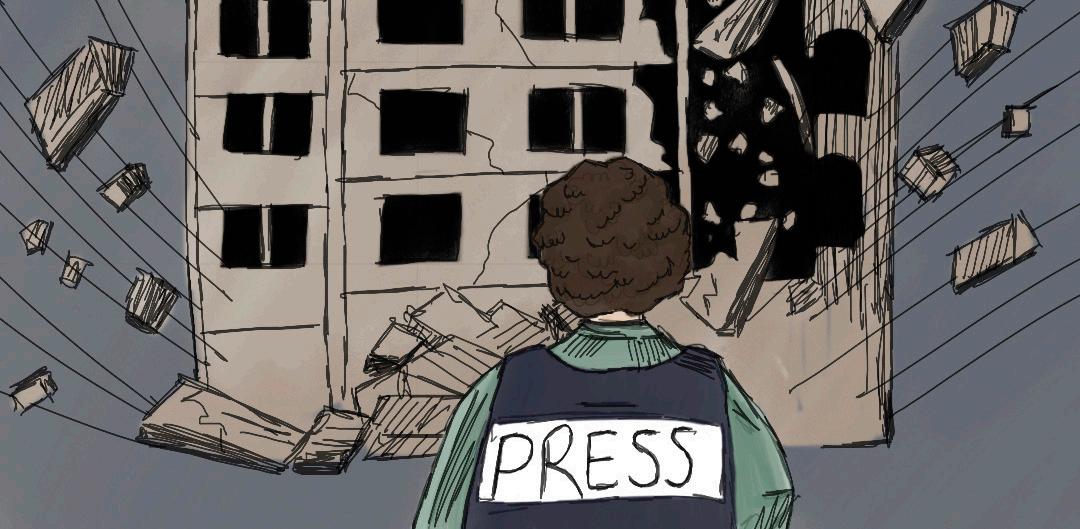
for proportionate representation and do not emphasize the imperativeness of context and perspective. As a result, when events are concealed or distorted, readers are more likely to develop moral apathy toward human suffering.
In late September, Israel attacked Lebanon through exploding pagers and launched a ground invasion of residential areas under the premise of targeting Hezbollah — an Iran-backed military group formed in 1982 to resist Israel’s occupation of southern Lebanon. On October 8, 2023, Hezbollah had started launching airstrikes at Israel in response to Israel’s violent attacks on Gaza.
News outlets award Israel with significantly more leeway when it comes to the narrative of self-defence. From what I see, even Israel’s most barbaric acts during this genocide are justified under this self-defence rhetoric by political leaders and news outlets alike. Other parties like Palestine or Lebanon are allowed no such luxury — even after more than a year of violent attacks, which has resulted in over 3,000 people killed in Lebanon since last October, and genocidal actions in Palestine.
Journalists are already taking sides, whether we acknowledge it or not. As journalists, our immediate responsibility now is to seek alternative
avenues for expression — such as amplifying Palestinian voices who are independently reporting via social media platforms. Our primary goal should be to humanize the dehumanized.
Journalism has arguably been flawed since its inception, with biases continually contaminating what we call ‘neutrality.’ The implications of this, especially today, are grave. We have become desensitized to the suffering of Palestinians — and, by extension, Arabs and Muslims — who are now faced with the task of proving their humanity and their right to live.
It may be a while before journalistic standards are amended to remedy this. But in the meantime, as ordinary citizens, I believe we can play our part in flooding the inboxes of mainstream news outlets to demand fairer coverage. If we can’t be heard through sympathy, we must be heard through the next best thing: a nuisance.
Ayesha Siddiqui is a third-year student studying history and English. She is an associate editor for the Trinity Times and The Woodsworth Review, Director of Humans of the Ummah, journal editorin-chief for the History Students Association, and a columnist for the What’s New in News section of The Varsity’s Opinion column.
November 19, 2024
thevarsity.ca/category/science science@thevarsity.ca
Zuhal Olomi Varsity Contributor
On November 2, the Temerty Faculty of Medicine (TFM) hosted the annual Toronto Neurology Update — Demystifying Neurology for the NonNeurologist conference, an eight-hour-long hybrid event bringing non-neurologist physicians, nurses, resident physicians, and undergraduate students together. The event featured six lectures — on non-migraines, movement disorders, concussions, strokes, neuromuscular disorders, and multiple sclerosis — by neurologists.
The Varsity chose to highlight three of these lectures, offering a close look at the discussions on migraines, concussions, and neuromuscular disorders.
When it’s not a migraine
Dr. William Kingston, the headache specialist at Sunnybrook Health Sciences Centre, started this year’s conference off with a lecture about the different kinds of primary headache disorders, titled “When It’s Not Migraine.” Primary headache disorders are any syndromes that include headaches as the main symptom, the most common of which are migraines.
Kingston documented multiple real-life case
studies from his own practice. He recalled a patient with cluster headaches — a primary headache disorder characterized by severe unilateral pain. Cluster headaches are often referred to as ‘suicide headaches’ due to the excruciating and debilitating pain they can cause.
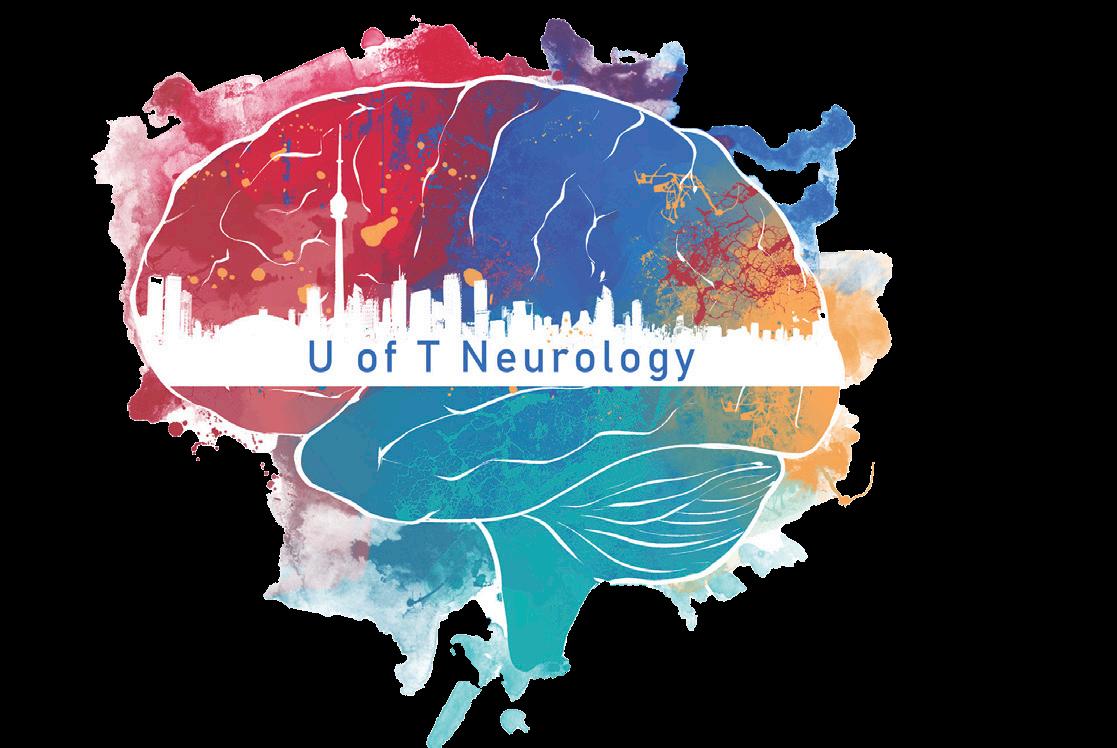
Cluster headaches in patients tend to occur at the same time during the night, at around 2:00 am, regardless of time zone or geography. Due to the nightly onset of these cluster headaches, patients tend to develop cephalalgiaphobia — the fear of a headache attack which can manifest as panic, fear, and overuse of pain medication. In North America, patients also tend to experience cluster headaches more frequently during the fall and spring, and less during the summer and winter.
Kingston discussed treatment options for patients with cluster headaches. One of the most effective therapies is oxygen therapy — the administration of higher concentrations of oxygen through breathing masks — which has been shown to relieve cluster headache symptoms in up to 78 per cent of patients within 15 minutes. Its effectiveness likely lies in its inhibition of the trigeminal autonomic reflex: a reflex of the brain that provides a protective function for the eyes, but is also linked with primary headache disorders.
The silent impact of concussions Dr. Carmela Tartaglia, a cognitive behavioural neurologist and associate professor at TFM’s Department of Medicine, hosted “Concussions,” a talk on the differences between concussions and traumatic brain injuries (TBIs). She stressed that the two are commonly referred to as one another, though they are not exactly the same thing: every concussion is a mild form of TBI, but TBIs are typically much more severe.
Patients tend to avoid seeking help right away, which is why concussions tend to go undiagnosed by doctors. If the affected patient does not improve within two weeks, this is an indication of a more serious underlying issue like a TBI that requires specialist referral. Tartaglia emphasized that physicians must be proactive in seeking treatment for their patients, as concussions can worsen rapidly if not treated.
Tartaglia also made an interesting point about treating the symptoms. A patient’s cognitive, behavioural, and physical symptoms are like gears in the brain working together — if one sector is malfunctioning, the rest are impaired. Cognition, meaning our mental processes, including attention

and memory, is the hardest gear to treat, which is why physicians aim to treat the other symptoms first. However, patients frequently experience anxiety following a concussion, and when patients are anxious, their memory tends to become impaired. So if you work on treating anxiety, you end up treating a patient’s memory as well.
When the body turns on itself: Multiple sclerosis and autoimmune neurology
Dr. Alexandra Muccilli, a neurology education director at St. Michael’s Hospital, captivated attendees with an in-depth understanding of multiple sclerosis (MS), an autoimmune disease where the body’s immune system attacks the tails of neurons in the brain and throughout the nervous system. This attack disrupts brain signals to the rest of the body, causing nerve damage that can affect sight, balance, muscle strength, and movement.
Multiple factors are statistically linked with developing MS, including contracting Epstein-Barr Virus, a common human herpesvirus; vitamin D deficiency; cigarette smoking; high intake of salt; and obesity. Although MS has a genetic component, only 10 to 20 per cent of patients report a family history of the disease.
For those diagnosed with MS, Muccilli recommends being proactive in seeking treatment. Within the first two years, treatment produces sustained benefits compared to treatment down the line.
While the 2024 Toronto Neurology Update was aimed at non-neurologist healthcare professionals, it offered valuable insights into the research in the neurology field, making it highly recommended to any students considering medicine, graduate studies in neuroscience, or any other profession in healthcare.
provided advice to the founders of the Public Health Agency of Canada, helped establish public health as a medical specialty for physicians, and wrote an influential, comprehensive, and widely used textbook that addresses the Canadian public health landscape.
While Shah’s work may seem like a drop in the ocean of health disparities among minorities, his philosophies, lived experiences, and knowledge continue to ripple through the lives he has touched as an educator and activist.
A book for seasoned practitioners and novices alike

Dr. Chandrakant Shah’s 2023 memoir, To Change the World: My Work With Diversity, Equity & Inclusion in Canada, offers a unique and poignant account of his journey as a public health practitioner and faculty member at the Dalla Lana School of Public Health at the U of T.
Spanning several decades, Shah’s career reflects his dual role as a primary care physician and an immigrant who used his expertise and lived experiences to address the challenges faced by Indigenous peoples across Canada. Through compelling narratives of his encounters with colleagues, leaders, and politicians, he portrays a daunting yet hopeful picture of his mission to improve the lives of those most often marginalized by the Canadian healthcare system.
From humble beginnings to a pioneer in Canadian public health
Shah opens the memoir by recounting his early life in rural India and his immigration to Canada, where his passion for public and Indigenous health as a clinical physician took root. He offers intimate details of his professional and personal journey in Canada, highlighting moments such as meeting his wife and committing to Indigenous health. Despite his long and influential career as a physician, educator, and activist, Shah emphasizes that his work is far from over.
Shah emphasizes the importance of understanding the social, political, and historical
climate that shapes decisions impacting the health of minorities in Canada. He underscores that public health is a multi-faceted and intersectional approach to promoting the physical, mental, and social well-being of communities. Shah guides readers through various Indigenous concepts of health and community, thoughtfully contextualizing them within the history of colonialism and its enduring effects on Indigenous lives.
Canada’s colonial legacy and continued systemic abuse of Indigenous peoples continue to compromise their physical, mental, and social health. Factors such as limited access to care, inadequate economic investment in health services, and internalized health stigmas contribute to these challenges, resulting in lower life expectancies for First Nations, Inuit, and Métis. Public health aims to counteract these inequities by investing in society — such as through vaccines and health education — to prolong life, optimize health, and ensure that everyone has the opportunity to thrive.
A life of service beyond the doctor’s office: Shah’s activism
Shah’s contributions to Canadians’ and minorities’ quality of life extend beyond medicine, and encompass cultural and educational spaces as well. Drawing inspiration from his lifelong activism for Indigenous peoples, he emphasizes the arduous nature of advocacy work, as reflected in his multiple retirements and subsequent returns to service.
Shah shares candid experience of time
spent away from his family, working in remote areas in Northern Ontario, and navigating bureaucratic hurdles to improve health outcomes for Indigenous communities. Despite these challenges, he finds solace and motivation in his work, reminding advocates that helping others is both exhausting and exhilarating, and that balance is essential in sustaining the work of activism.
Shah reflects on how his faith has shaped his role as a doctor, educator, activist, father, and husband. He emphasizes the importance of different communities coming together to share their beliefs and knowledge and fostering stronger social cohesion: something he argues is sorely lacking in modern society. Shah presents his approach of bridging differences through goals and values as a source of hope and a pathway for change within a prejudiced system that marginalizes people based on appearance. He also addresses difficult topics such as systemic racism with grace and detail, highlighting the severe health issues it causes. Systemic racism is race-based discrimination that exists in society through long-standing policies and white superiority. In a striking example, Shah recounts the story of a “sixty-five-year-old Indigenous woman with early symptoms of stroke, who was labelled ‘drunken’ in two emergency rooms in Toronto and discharged” without proper care.
Recognizing the need for educational system reform, Shah also advocates for greater diversity in both teaching staff and curricula to ensure that future generations can build on his progress. He
The book is invaluable for both seasoned health practitioners and novices interested in public health. Newcomers will find that Shah’s concise explanations provide an accessible and easy-tounderstand overview of the healthcare system and its impact on Indigenous communities. Meanwhile, those already working in healthcare can draw on Shah’s gathered knowledge, skills, and experiences to navigate their interactions with colleagues, researchers, government officials, and patients within the dynamic social ecosystem of health.
Shah’s accessible writing and his approach to complex topics, such as medical injustice and systemic oppression, make for an informative and compelling read. His work prompts readers to reflect on how history, policy, culture, and science intersect to shape something as personal as health, both physical and mental.
However, unless one is already familiar with the healthcare system for Indigenous people, the many events and people Shah encounters provide only a glimpse into its complexity. In my opinion, I felt that Shah’s memoir reads like a continuous stream of successes. While these successes are certainly worth celebrating, the emphasis on them seems disproportionate and somewhat diminishes the role of obstacles and failures in shaping both our professional and personal lives.
Ultimately, Shah’s memoir presents a portrait of a professional deeply committed to his work — whether in the clinic, at advocacy events, teaching, or working directly with the communities to improve the lives of the most underrepresented and underserved in our society. Change-makers can learn from his example that intent must be matched by action, and that working toward change is the cure for the heaviness caused by the issues plaguing our society.

How collaborative science can honour cultural wisdom and drive innovation
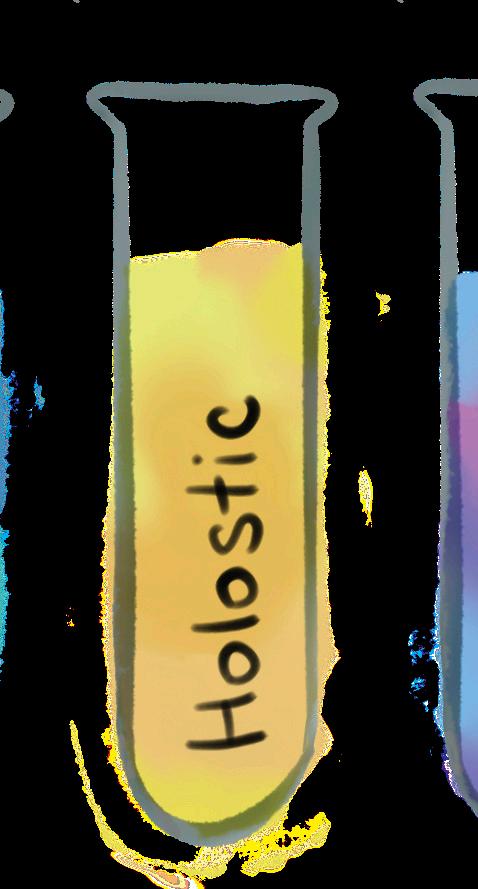
While progress and innovation are often attributed to Western scientific principles, our modern understanding of the world is also shaped by diverse and evolving cultural, social, and historical influences, such as traditions, prior experiences, belief systems, and core values.
Indigenous and Western sciences provide distinct but equally valuable frameworks for research in fields like medicine, psychotherapy, sustainability, and more. By exploring the intersection of these frameworks, and addressing the systemic exclusion of Indigenous voices in the scientific process, we can unlock new opportunities for innovation and collaboration, advancing knowledge in ways that respect and embrace
Indigenous science: Emphasizing interconnectedness and spirituality Indigenous scientific methodologies are deeply intertwined with culture, environment, and community, offering a comprehensive framework that emphasizes interconnectedness.
In Indigenous science, nature is not merely an object of study but an active participant in the process of building knowledge. Indigenous peoples emphasize the importance of fostering relationships based on mutual respect among individuals, nature, and the spiritual world. Healing methods like storytelling, personal reflection, sharing circles, and ceremonies have been passed down through generations by elders, healers, and community members. Each ceremony contains a natural aspect that consistently links the connection between the body and the surrounding environment. By combining

Many Indigenous groups practice sweat lodge ceremonies, using natural remedies such as cedar, which is detoxifying and a source of vitamin C, along with personalized songs and prayers that invoke the power of universal elements — Earth, water, fire and air — for spiritual guidance and purification. Until 1951, the Indian Act made the sweat lodge ceremony illegal, turning it into a symbol of resilience for Indigenous peoples once it could be conducted again. The ceremony fosters introspection and restores balance within the individual, strengthening their connection to nature and the spiritual world. In contrast, Western medicine often divides ailments and organs into distinct specialties, sometimes overlooking how health conditions are interrelated.
Western science: An incomplete approach Western scientific methodologies are grounded in observation and carefully controlled experiments that aim to affirm “objective truth” — that is, proven and tested facts. These methods often prioritize a third-person perspective when studying nature, while Indigenous cultures emphasize immersion, subjective knowledge, and interconnectedness.
According to the influential science historian David Charles Lindberg, previous civilizations, such as Ancient Mesopotamia and Egyptian cultures viewed nature as the work of divinity, or considered it inaccessible to humans in our pursuit of knowledge. The Western scientific approach, as we know it today, has its roots in the Ancient Greek and Hellenistic astronomers and physicians, who studied the motion of planets and conducted meticulous dissections of the human body.
In his book The Beginnings of Western Science Lindberg credits the Western scientific approach with separating nature from the spiritual, allowing for a more secular exploration of the natural world. Although the Western scientific method continues to benefit the lives of billions, breaking down complex systems into isolated variables fails to capture the interconnectedness of natural processes, which Indigenous philosophies hold paramount.
In psychotherapy, cognitive behavioural therapy — focusing on restructuring unhelpful behaviours and thought patterns — and psychoanalysis — focusing on introspection and the unconscious mind — are common treatments within the Western framework for addressing depression, anxiety, and phobias. While these treatments provide valuable insights into individual behaviour and mental processes, they often overlook the social, cultural, and spiritual contexts that significantly influence

Western approaches often focus on prescribing medication and one-on-one therapy, rather than addressing the broader cultural and spiritual factors that may exacerbate mental health issues. In contrast, Indigenous perspectives prioritize these contextual aspects, recognizing the individual within the broader framework of family, culture, and environment to offer a more holistic approach to mental health.
The cost of Eurocentrism in science Historically, one reason Eurocentric — meaning, focusing on European or white culture and beliefs — approaches dominated the global stage was due to the West’s political, military, and industrial influence. As a result, Indigenous knowledge systems and values were often dismissed as ineffective, negligible, or too unserious for scientific progress, which was narrowly defined by Western standards. This dismissal has not only harmed Indigenous communities but has also restricted the scope of scientific advancement.
The neglect of botanical knowledge in medicine exemplifies the unintended consequences of Eurocentrism in science. Indigenous communities across North America have practiced herbal medicine for millennia, possessing a deep understanding of medicinal plants. However, this knowledge was historically overlooked by Western scientists and later ‘rediscovered’ and commercialized by pharmaceutical companies.
Indigenous communities across North America have practiced herbal medicine for millennia, possessing a deep understanding of medicinal plants. However, this knowledge was historically overlooked by Western scientists and later ‘rediscovered’ and commercialized by pharmaceutical companies

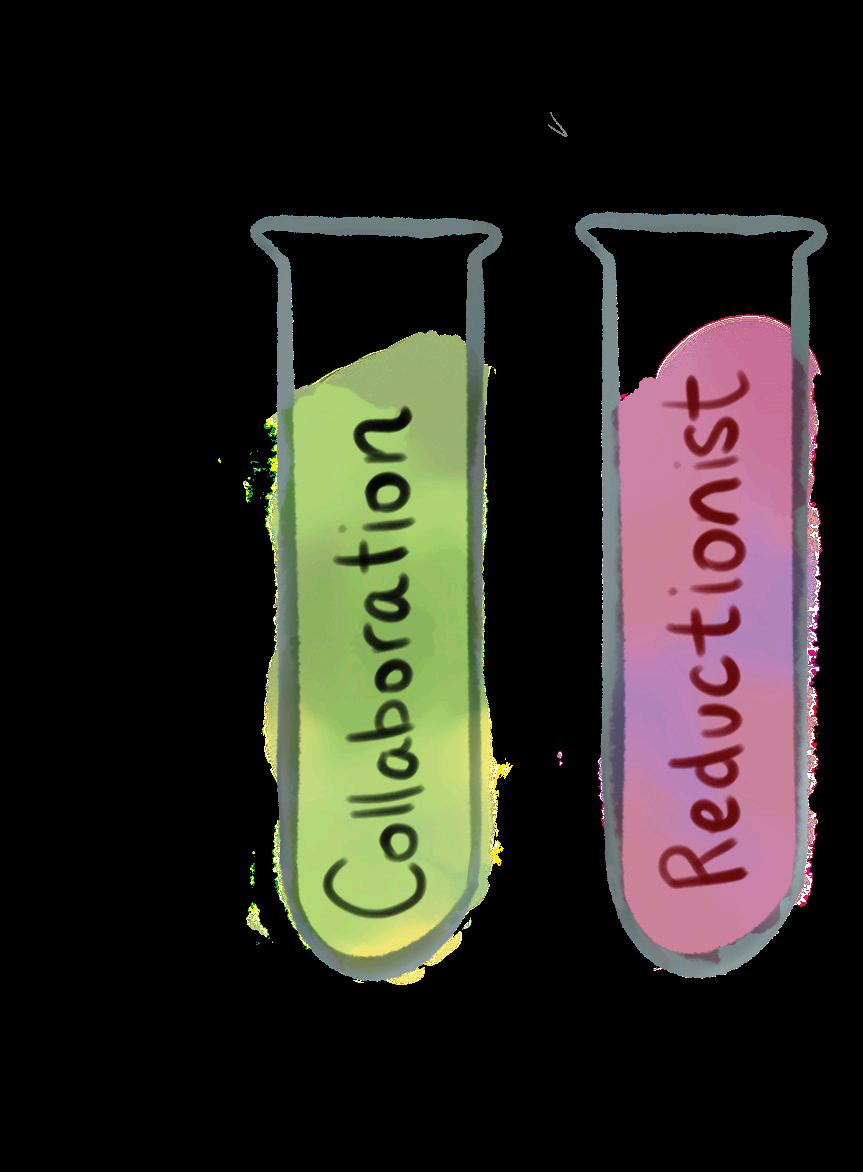

November 19, 2024
thevarsity.ca/section/sports sports@thevarsity.ca
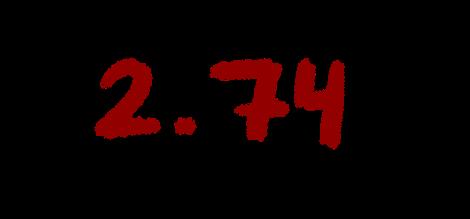
Pure domination. The Varsity Blues’ baseball team secured back-to-back banners on October 12, for an OUA-leading eighth title in program history and third in four years.
OUA Champions
MVP: Owen Taylor
The Blues also claimed four of five major awards — with three awards being back-to-back honors. Outfield Owen Taylor secured his second straight MVP title with an astonishing .419 batting average, while pitcher Kevin Angers also grabbed back-to-back honours as Pitcher of the Year, alongside repeat Coach of the Year accolades for Head Coach Andrew Needles. Infielder Ryan Hsu was named Most Valuable Hitter. The team also grabbed eight of 12 available all-star selections. Full marks for the men’s baseball team.

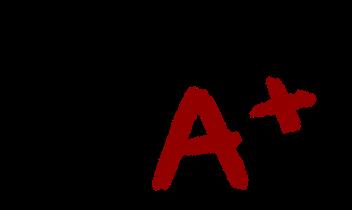
Eighth out of 15 at OUA Championships, not-ranked at nationals
MVP: Ben Shore

10th of 11 in OUA Regular Season
MVP: Oskar McPhie
10th of 14 at OUA Championships
The men’s cross country had a steady season, participating in three provincial opens before competing in the provincial and national races. The team began the season on September 21 with the Western Invitational, where the Blues placed sixth out of the 13 teams. Rookie runner Parker Levac had a particularly impressive race, finishing tenth out of 137 runners.
The following week at the Don Mills Open — hosted by the Waterloo Warriors — the Blues had an impressive team performance, finishing third overall out of the 10 teams. Ben Shore led the line with a fourth place finish out of over 130 runners. At the 8-Kay Marauder Invitational in Hamilton, the Blues finished seventh out of the 13 participating teams.
A month later at the OUA championships, the Blues finished eighth of 15, with Adam Pralat scoring the best finish on the team at 41st place, unable to replicate last year’s bronze medal results. The Blues ended the season at the U SPORTS national championships, with sole Blues representative Shore placing 25th in a field of 152 runners. The team did not have enough racers to place a team result.
It was a tough year for Varsity Blues Football. The Blues only managed one win over victoryless Waterloo Warriors in the first game of the season, losing seven straight to round out the year. Their 1–7 record is the worst for the program since a winless 2018–2019 season. The offense struggled immensely, with their total points for the season standing at 91, 40 lower than the second-lowest team, the York University Lions.
The defense also floundered, giving up 331 points — only five less than the last place team, the Waterloo Warriors, and far behind the third-worst defensive team, the Carleton University Ravens, with 245 points.


Golf Lacrosse
MVP: Jordan Hutchings

First round playoff exit, sixth of eight in CUFLA West regular season
MVP: Daniel Clarke
Rowing Cross Country
The future surely lies in the hands of the team’s rookies, such as quarterback Kaleb O’Donoghue who had a solid start to his OUA career, posting 153 yards per game — ninth in the league — while defensive back Oskar McPhie was named on the OUA all-rookie team. The team also gave York University their program’s first win since 2019 in the annual Red and Blue Bowl. A debut season to forget for Head Coach Darell Adams.

The men’s golf team had a quiet season, finishing ninth in the Guelph Fall Kickoff, sixth in the Western Invitational, 10th in the Brock Invitational, and eighth in the Laurier Invitational. The team then placed 10th out of the 14 teams with 604 combined strokes at the OUA Championships — with just six points separating them from 11th place Western University with 605 strokes and fifth place McMaster University with 599 strokes. Jordan Hutchings led the team with 77 strokes at the Brock Invitational and 145 combined strokes at the provincial championships — best for seventh out of a 70-man pool — earned him Second Team All-Star honours.

Ninth of 16 at CURC, third of 14 at OUA Championships
Seventh of 11 in OUA Regular Season
MVP: Eric Vann
The men’s lacrosse team had an inconsistent season, going 4–6 in the Canadian University Field Lacrosse Association (CUFLA) West regular season. As the sixth seed, the team faced off against first seed Guelph University Gryphons 10–0 in the first round of the playoffs. The Gryphons were too dominant for the Blues, as the team got blown out 18–2 on October 27. The team missed the playoffs in 2023 with a 1–9 record, so a first-round exit is a step in the right direction.
Unfortunately, their par .500 regular season and a blowout playoff loss cap the team at a B grade. As 30th in the league, midfield Daniel Clarke led the team with 20 points — 12 goals and eight assists — while midfield Graham Dicken grabbed a lethal 16 goals, good for 1.6 goals per game. The Blues have not advanced beyond the first round of CUFLA playoffs since at least 2007: the last available season on the Varsity Blues website.
It was calm waters all season for the Varsity Blues rowing team, who picked up seven podium finishes — three silver and four bronze — across three invitational regattas. The team then finished the OUA Championships with an impressive bronze line-up, securing third place out of 14 teams on October 26. At the Canadian University Rowing Championships (CURC) held in Victoria, BC, on November 1–3, the team placed ninth overall with no podium finishes from any senior team events. In the previous 2023 season, the men’s team finished eighth. The team also had a lone first place finish in the B-Final Men’s one-person event.
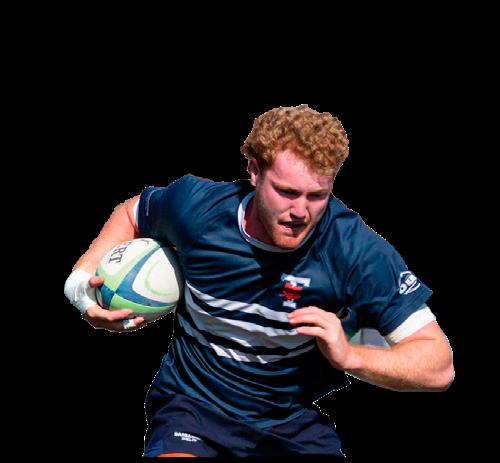
Quarterfinal exit at OUA Playoffs, first of nine in the OUA East regular season
MVPs: Andrea Schifano and Niklas Hallam

Silver at OUA Championships, Bronze at CUTC Nationals
MVP: Rassam Yazdi
The men’s rugby team had a statistically average season, going .500 over their six regular season games. The team narrowly missed out on a playoff berth, falling just one point shy of reaching the quarterfinals. Scrum half Yuta Takahashi had a particularly impressive season, accounting for 45 of the team’s 172 points — 26 per cent of the team’s overall points and tied for sixth in the league. Lock Eric Vann was named as an OUA Second Team All Star. Considering the team went 0–6 in the 2022 season and went 2–4 last year, it’s clear that the Blues are on an upward trajectory and are a team to keep an eye on next season.
While the men’s soccer team had a fantastic regular season, the Blues could not continue the momentum into the playoffs facing an abrupt and unceremonious quarterfinal exit at the hands of the lower-seeded Ontario Technical University Ridgebacks. While the Ridgebacks would go on to win the OUA championships, the result is all the more frustrating for the Blues, considering that the Ridgebacks just edged out McMaster Marauders in the semifinals on penalties and narrowly won 2–1 over York University in the finals.
The 5–2 quarterfinal loss saw a complete meltdown by the Blues, who conceded five in a row — the Blues had not conceded more than two goals in any game the entire season — and only managed to score their goals after the 80th minute. The team’s 9–2–1 regular season landed them first in the OUA East and was the best record in both conferences.
Rookie forward Niklas Hallam and forward Andrea Schifano delivered stellar seasons, with 10 goals each, tied for second in the OUA. Head coach Ilya Orlov received OUA Coach of the Year for leading the Blues to their best record since 2016. Hallam won OUA Rookie of the Year alongside an appearance on the second All-Star team. Schifano was named on the first All-Star team alongside midfield captain Mehdi Essoussi and defense and third-time all-star Shon Siegelwachs. Schifanno and Hallam’s phenomenal seasons were also nationally recognized as the pair were named on the U Sports Second Team All-Canadian and U Sports All-Rookie Team. The future is looking incredibly bright for the surging Blues. A lacklustre final exam hindered a phenomenal season, but full participation marks.
To be expected by now, the men’s tennis team had a fantastic year. The team opened the season with a bronze medal at the Canadian University Tennis Championships (CUTC) in Montreal thanks to last year’s OUA gold, with captain Rassam Yazdi taking home a championship all-star nomination.
The Blues’ men’s tennis team are an OUA championship mainstay, reaching their mind-boggling ninth consecutive OUA final this season. The team fell 4–2 against the Western Mustangs in the championship final on October 13, falling just short of back-to-back championships. The team had only lost a single fixture all season until the finals.
Dominant doubles pair Yazdi and rookie Tamas Foldi were named OUA all-stars, with Yazdi claiming his fourth career allstar honours in four years. Yazdi adds to his overflowing trophy cabinet, which already contains four OUA silver medals, one OUA gold, a 2022 OUA Player of the Year, and a CUTC bronze medal.



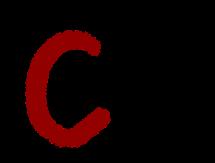

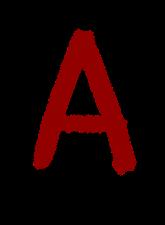
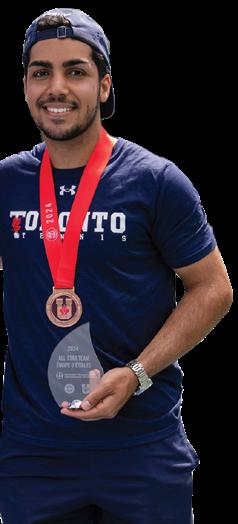
Sixth at OUA Championships, 12th at Nationals
MVP: Julia Agostinelli
Field Hockey

Fourth at OUA Playoffs
MVP: Deepi Gill

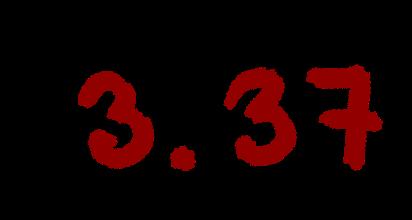
The Varsity Blues women’s cross country team had a solid season, beginning the semester on September 21 with the Western Invitational — where they placed fifth out of 11 teams. Blues debutante and last year’s fastest OUA runner with the Guelph Gryphons, Julia Agostinelli had a phenomenal race, finishing second out of 124 runners. The following week at the Don Mills Open, the Blues had an impressive team performance, finishing with a silver medal. Ace runner Agostinelli continued to lead the line, finishing first place, while Sarah Luedke came in at sixth in a field of 98. At the 8-Kay Marauder Invitational, the Blues slid down in the standings, finishing seventh out of 12 teams.
At the OUA championships, the Blues finished in sixth place out of 15 teams, with Agostinelli again scoring a team-best; eighth place among the century of runners. The Blues have not medalled at the OUA championships since their bronze medal in 2013. The season came to a close at the U Sports national championships, where the Blues finished in 12th place. The ever-steady Agostinelli finished in 15th place, 47 places ahead of her next U of T teammate. The Blues’ silver finish at the Don Mills Open just pushes them above their men’s counterparts, while Agosinelli’s superb individual running bumps them up another grade.

Historically, the Varsity Blues field hockey team are OUA juggernauts, winning 34 of 53 OUA titles since the league began in 1971. The 2023 OUA champions started the season with a pre-season tour of England, matching up in exhibition games against English universities and club teams. The Blues’ pre-season adventures prepped the team well for the OUA regular season, as the team posted an undefeated 9–0–1 record, the best in both OUA divisions. Unfortunately, the Blues could not carry their momentum into the playoffs, falling 1–0 in a tightly contested semi-final against the Waterloo Warriors before losing in a heartbreaking shootout against the York Lions in the bronze medal game.
Goalkeeper Deepi Gill had a phenomenal season, grabbing OUA Goalkeeper of the Year alongside a prestigious U SPORTS All-Canadian nomination. Leading the team as captain, Gill only conceded two goals the entire regular season — posting a .750 shut-out percentage — adding to her 24 career shutouts in 51 games alongside two provincial banners. Gill was also nominated as an OUA All-Star alongside Blues midfielder McKinley Kennedy and defender Maggie Mullins. After a standout season, ending the year on two narrow losses seems unfair, but the team will no doubt bounce back in the coming season.
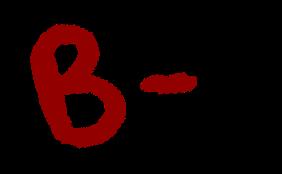

OUA Champions Bronze at OUA Championships
MVP: Anna Foley
MVP: Leah Hickey
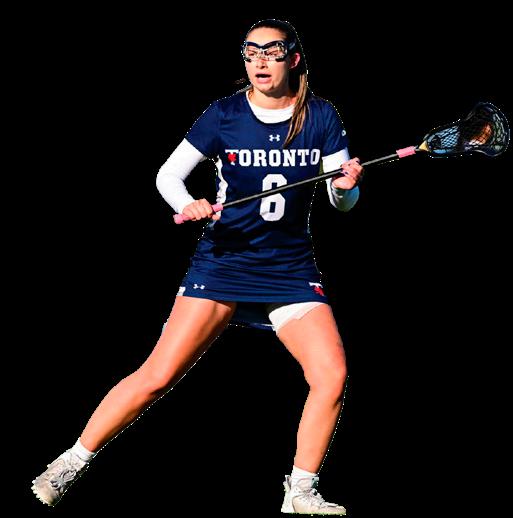
Sixth of 16 at CURC, fourth of 14 at OUA Championships
MVPs: Elena Eberhardt and Sophie Corradini
Quarterfinals (First Round) exit at OUA Playoffs, sixth of 10 in regular season
MVP: Emma Yang
Quarterfinals (Second Round) exit at OUA Playoffs, fifth of 10 in OUA East regular season
MVP: Hannah Chown
OUS Champions, Quarterfinal exit at CCSA Nationals
MVP: Alexia Verches
The women’s golf team steamrolled the competition this season, scoring a podium finish in every single tournament they participated in. At the season-opening Guelph Fall Kickoff, the Blues started off strong with a silver medal win. The team then grabbed a gold medal at the Western Invitational, with Anna Foley leading the pack with an individual first-place finish. The team continued to fill the trophy cabinet by picking up a bronze medal at the Brock Invitational and a gold medal at the Waterloo Invitational. At the all-important provincial championships, the Blues grabbed their 10th OUA title in program history, beating out the Guelph Gryphons on a tiebreaker. The ever-dominant Foley grabbed the Judy McCrae Trophy as individual champion, as well as first-team all-star honours. Full marks, with the team scoring just shy of a perfect record in every assignment as well.
The women’s lacrosse team had a mediocre regular season before surging in the playoffs to grab a provincial bronze medal. The Blues managed just two wins in nine games in the regular season, but as all nine teams in the league reached the playoffs, the team had a chance to make a run albeit with a low seeding. After finishing the group stages with a 10–10 tie against Trent University and a 15–8 win against Brock University, the Blues faced off against the eventual OUA champions — the Queen’s University Gaels — in the OUA semifinals losing 23–3 in a tough blowout. Fortunately, the Blues grabbed reset for the bronze medal game, defeating Trent Excalibur 11-9 — thanks to a resounding four-goal game from midfielder Keira Gowan.
Head Coach Jesse Porter grabbed OUA Coach of the Year honours, while defender Leah Hickey was named an OUA all-star. The team’s third-place finish is the best since its previous bronze medal win in the 2017 season. The Blues are clearly on an upward trajectory; in 2022, the team finished in fifth place and in 2023, the team finished in fourth after losing in the bronze medal game against Trent. The Blues stepped up at the final despite missing a few classes along the way, and the lacrosse team continues to prove that they are an entertaining team to keep an eye out for in the playoffs.
It was smooth waters all year for the Varsity Blues women’s rowing team. Opening the season at the Western Invitational, the Blues grabbed five silver medals in the Lightweight Single, the Heavyweight Single, the Lightweight Double, the Lightweight Four, and the Heavyweight Eight. The team then secured another four podiums at the Head of the Trent, earning silver in the Women’s Single — while the Lightweight Four, Lightweight Double, and Eight teams secured bronze finishes. In their final races ahead of the provincials at the Brock Invitational, the Lightweight Doubles, and Lightweight Four teams nabbed a pair of bronze finishes.
At the OUA championships, the Lightweight Double duo of Elena Eberhardt and Sophie Corradini rounded out their impressive provincial season by finishing with their fourth straight bronze medal. The Lightweight Eight team grabbed a team-best silver while the Lightweight Four’s also grabbed a bronze.
At the CURC championships held in Victoria, BC, from November 2–3, the team did not finish with any podiums; however, the ever-consistent Eberhardt and Corradini placed a team-best fifth in the Lightweight Double race. The Lightweight Four crew of cox Katy Miller, Corradini, Eberhardt, Guinevere Reaume, and Dayun Kong also finished fifth. The team placed sixth overall, one place better than last season’s nationals. The dynamic Eberhardt and Corradini duo had a standout season, racing in multiple categories finishing the season with two silvers, two bronzes, and a provincial silver and bronze.
The women’s rugby team were dead even on the year, going 3–3 in the OUA regular season for a sixth-place finish in the league. The team then lost convincingly to Brock University in the first round of the playoffs 76–12. Brock is a historically difficult matchup for the team, as the Blues have never beaten them in their six lifetime matchups, including last year’s quarter final fixture. The team has not advanced beyond the first round of playoffs since at least 2005, the last available year on record. Flanker Emma Yang led the team in points and tries with seven tries, tenth best in the league. Yang was named as a second-team all-star alongside teammates Mary Adewa and rookie Bailey Froese.
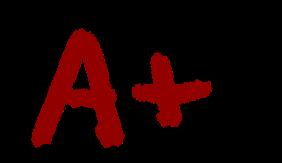




The women’s soccer team had a solid regular season, finishing fifth of 10 in the OUA East division with a 6–3–3 record. After dispatching their Line 1 rivals TMU Bold 1–0 in the first round of playoffs, the Blues were matched up against first in the East division University of Ottawa in the quarter finals. The Blues fell to the provincial champions 2–1 in a tightly contested game. The OUA quarter finals have been a bane for the Blues in the past few years, with the team failing to advance past this stage since 2019, when the team won silver at the provincial level and bronze at the national.
Defense and team captain Hannah Chown continued to be the heartbeat of the team, rounding out her personal accolades by earning her fourth straight OUA all-star nomination with a place on the first all star team. Most impressive is her goal-scoring prowess and role as a set-piece specialist. Despite playing in defense, Chown has led the Blues in scoring for two seasons in a row and netting 18 career goals in 44 games. Chown was clutch in the playoffs, grabbing both of the team’s two goals in the postseason. Defense Cassie Chan and midfield Hannah Anderson were named to the second All-Star team.

OUA Champions, Bronze at Nationals
MVP: Winnie Choi
It was an outstanding season for the Varsity Blues softball team, as the commanding Blues secured their second straight provincial championship and third since joining the Ontario University Softball (OUS) in 2002. The Blues wrapped up their OUS regular season with a 12–6 record, finishing in first place in the East division on October 4. Thanks to the team’s victory in last year’s OUS Championships, the Blues then competed at the Canadian Collegiate Softball Association (CCSA) Nationals, held on October 11–13. After winning two and losing one in pool play, the Blues were matched against the eventual silver medalists, the Humber College Hawks in the quarterfinals. The Blues fell 10–2, and their hopes of bringing home a national title came to an end. The team then coasted through the OUS championship playoffs, going undefeated while putting up 23 runs in three games en route to the final.
Outfield Isabella Trakosas walked off the game 11–10 to secure their back-to-back banner in dramatic fashion. Rookie catcher Alexia Verches was named Finals MVP for her three hits, three runners batted in, and an inside-the-park home run performance.
First-year Head Coach Scott Aquanno will set his sights on next year’s national competition, with his young team once again cementing their place as Ontario’s best. Pitcher Olivia Mather and utility Tala Rennie earned OUS Team All-Star nominations. Full marks, and a team to continue to keep an eye on next season.



The Blues’ women’s tennis began their season with an appearance at the Canadian University Tennis Championships (CUTC), grabbing a national bronze medal alongside their men’s counterparts. The Blues’ number one women’s player and last season’s OUA Player and Rookie of the Year Anastasiya Dyadchenko grabbed a championship all-star. In the OUA, the team had a statistically perfect season, and no other team in the competition came close. After finishing a perfect 7–0 in regular season play, the Blues breezed through the playoffs taking down Queens 7–0 in the quarterfinals; Western Mustangs 6–1 in the semi-finals; and dispatching McMaster Marauders 7–0 to defend their banner in style.
The Blues are an OUA championship mainstay with the team reaching their sixth consecutive OUA final this season. The team also picked up individual awards like there was no tomorrow — Winnie Choi received her second career Player of the Year, while Kaira Xuan notched Rookie of the Year. Choi and Dyadchenko also grabbed OUA all-star honours. The dominant team has championships in 2019, 2021, and 2023, and shows no signs of slowing down. No notes.

